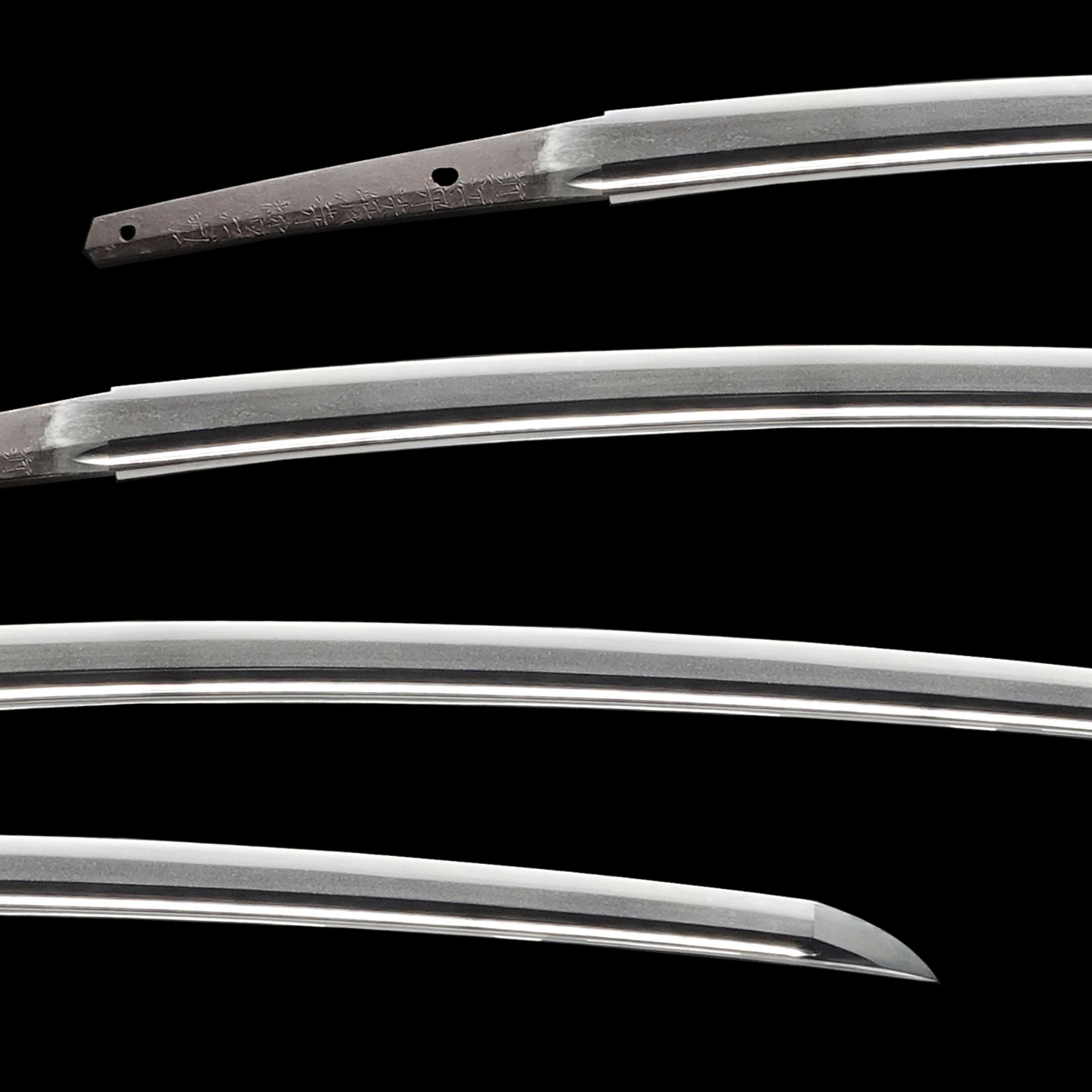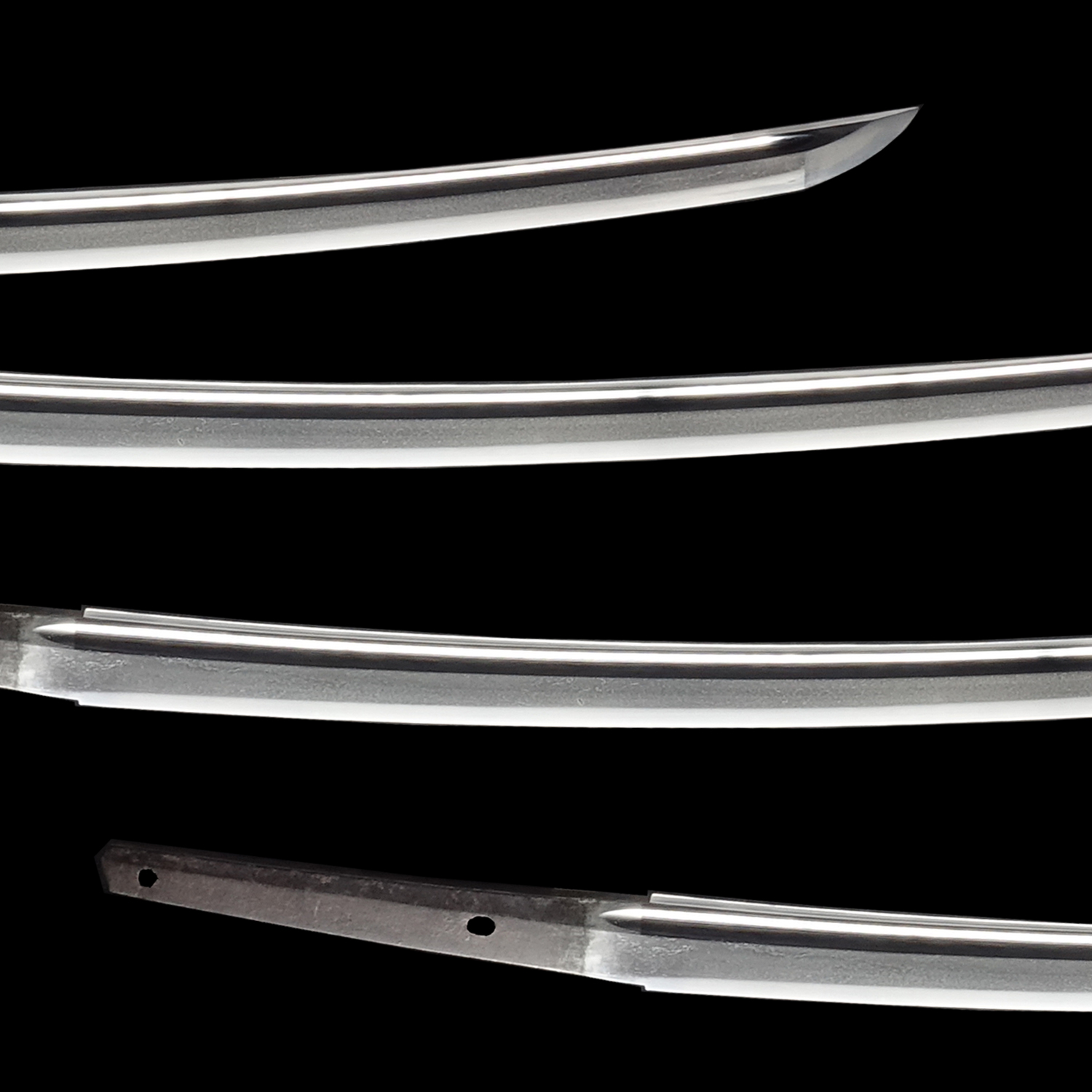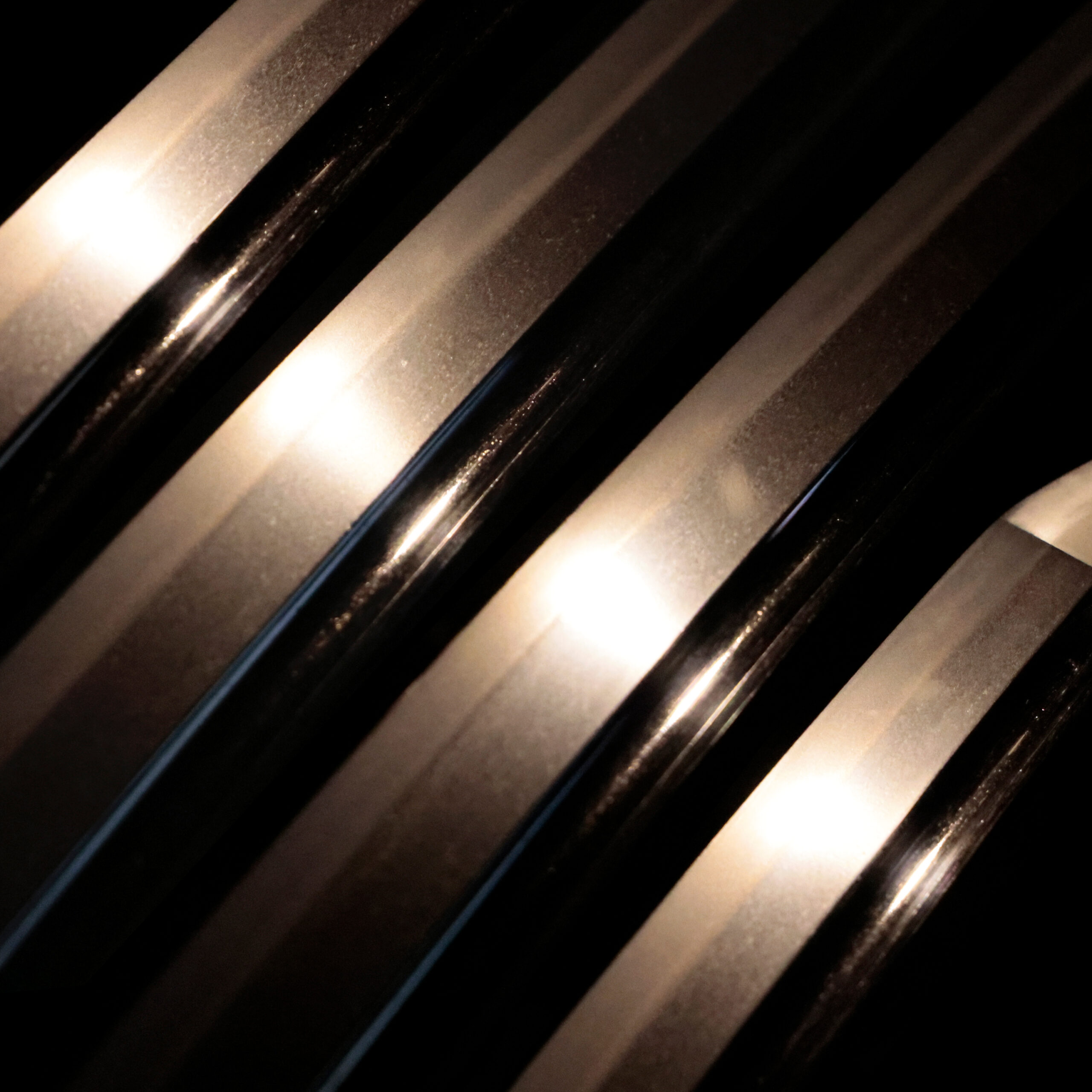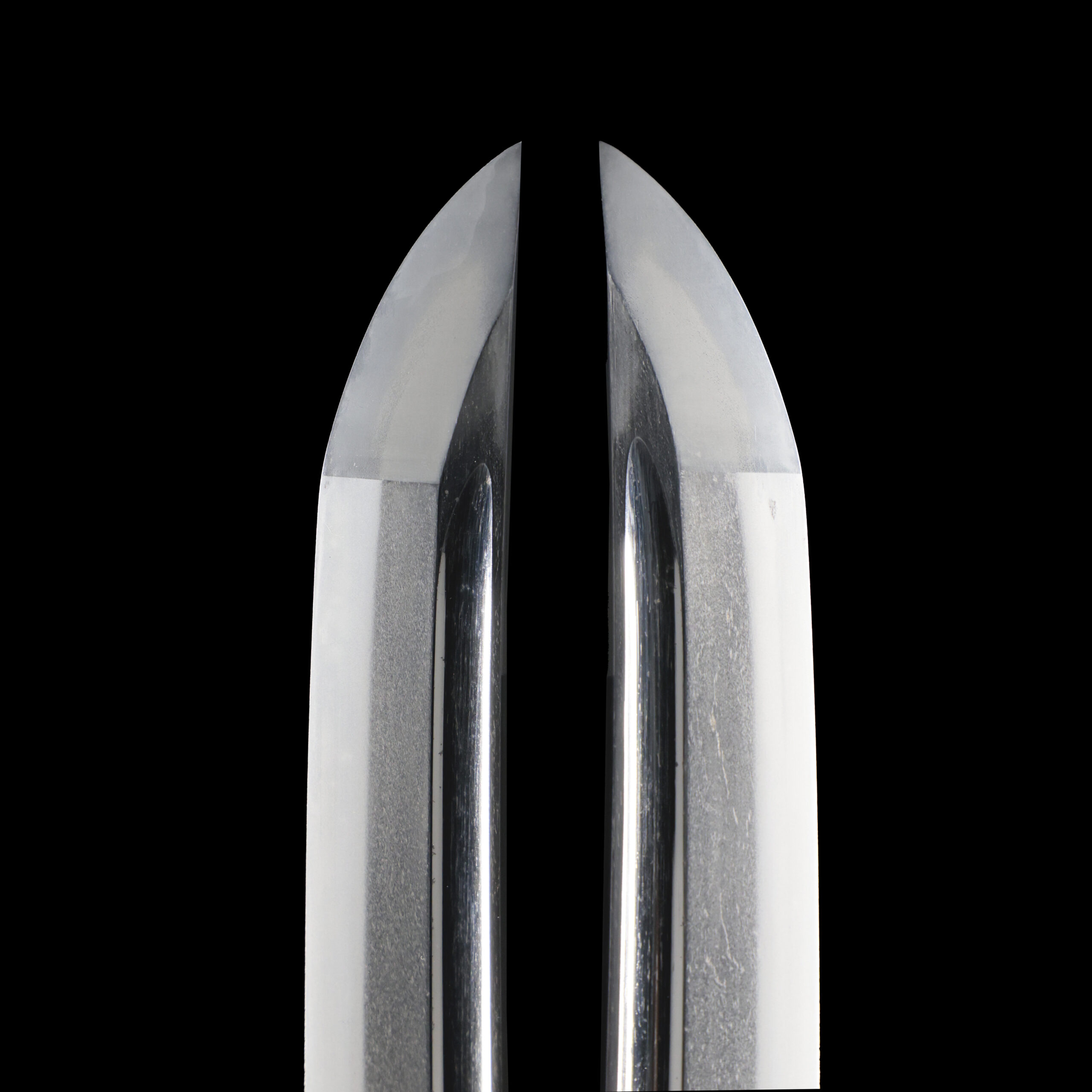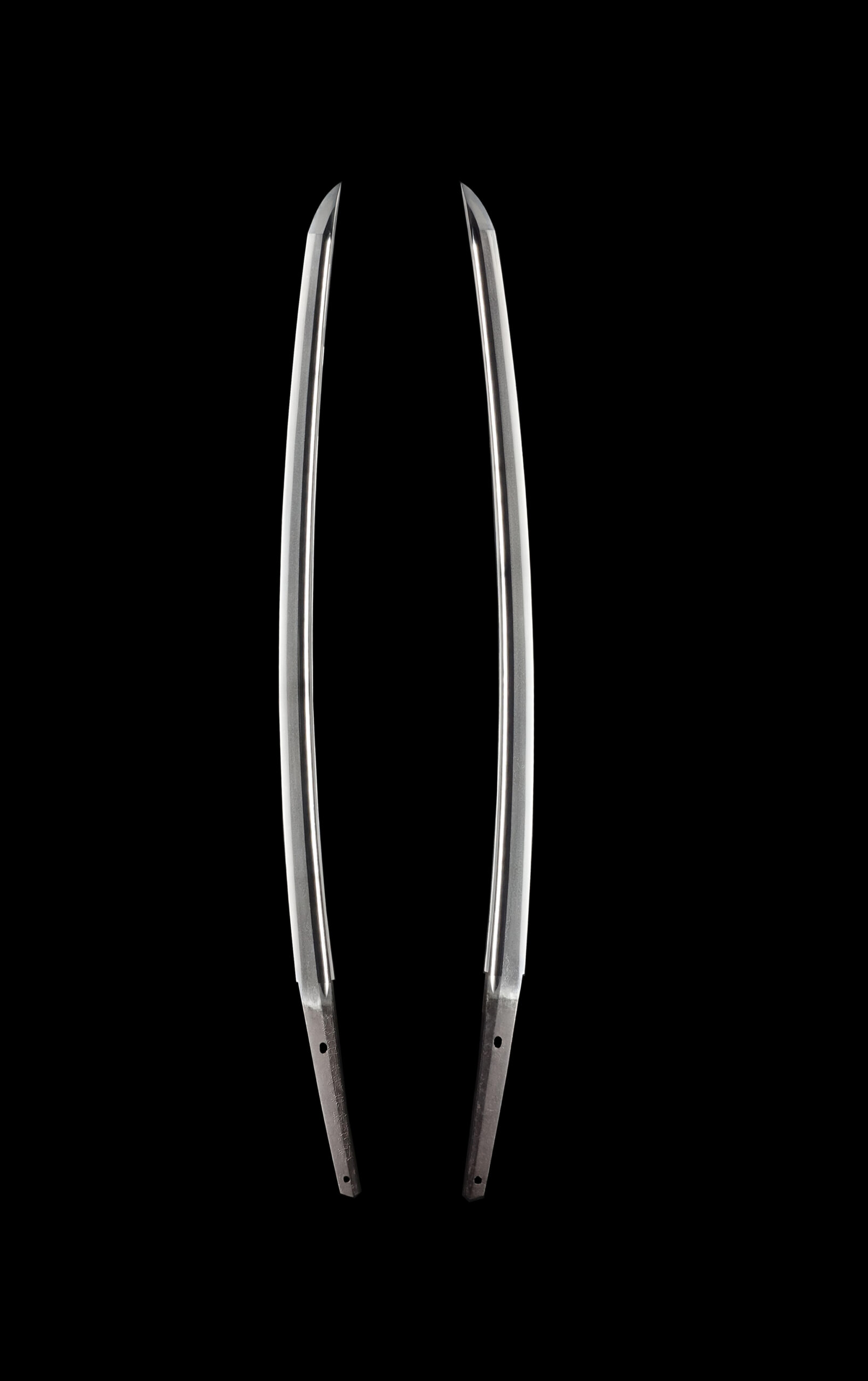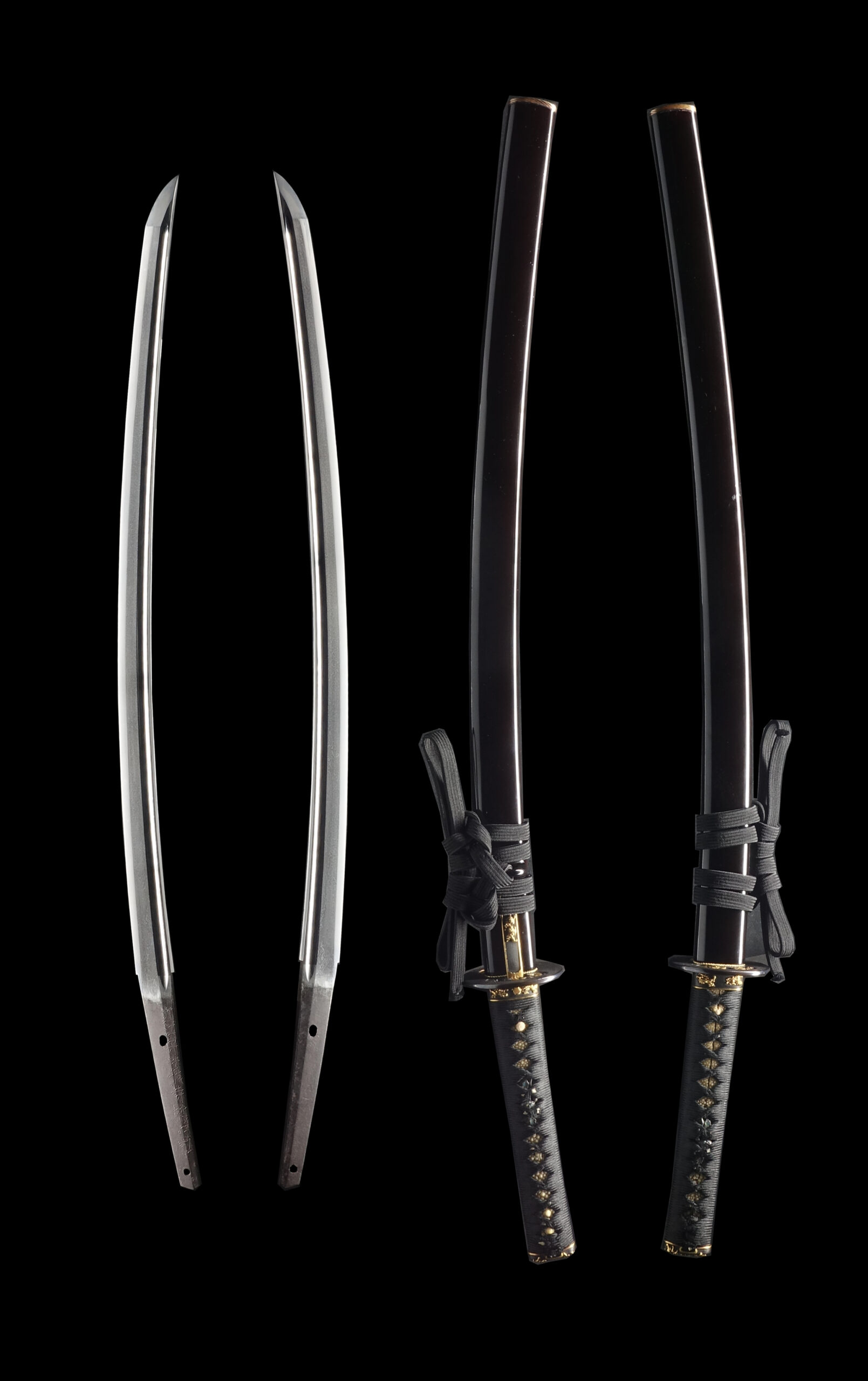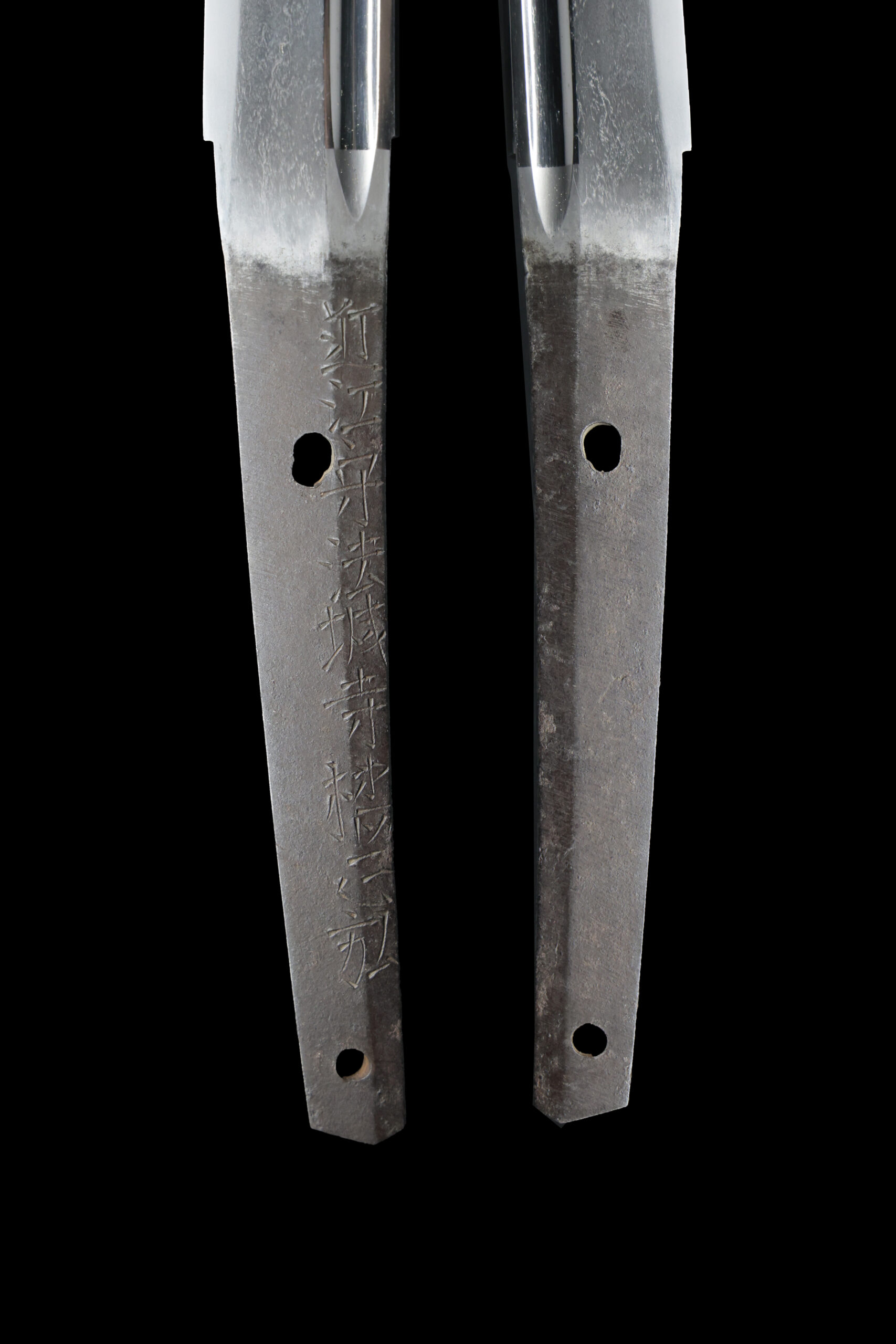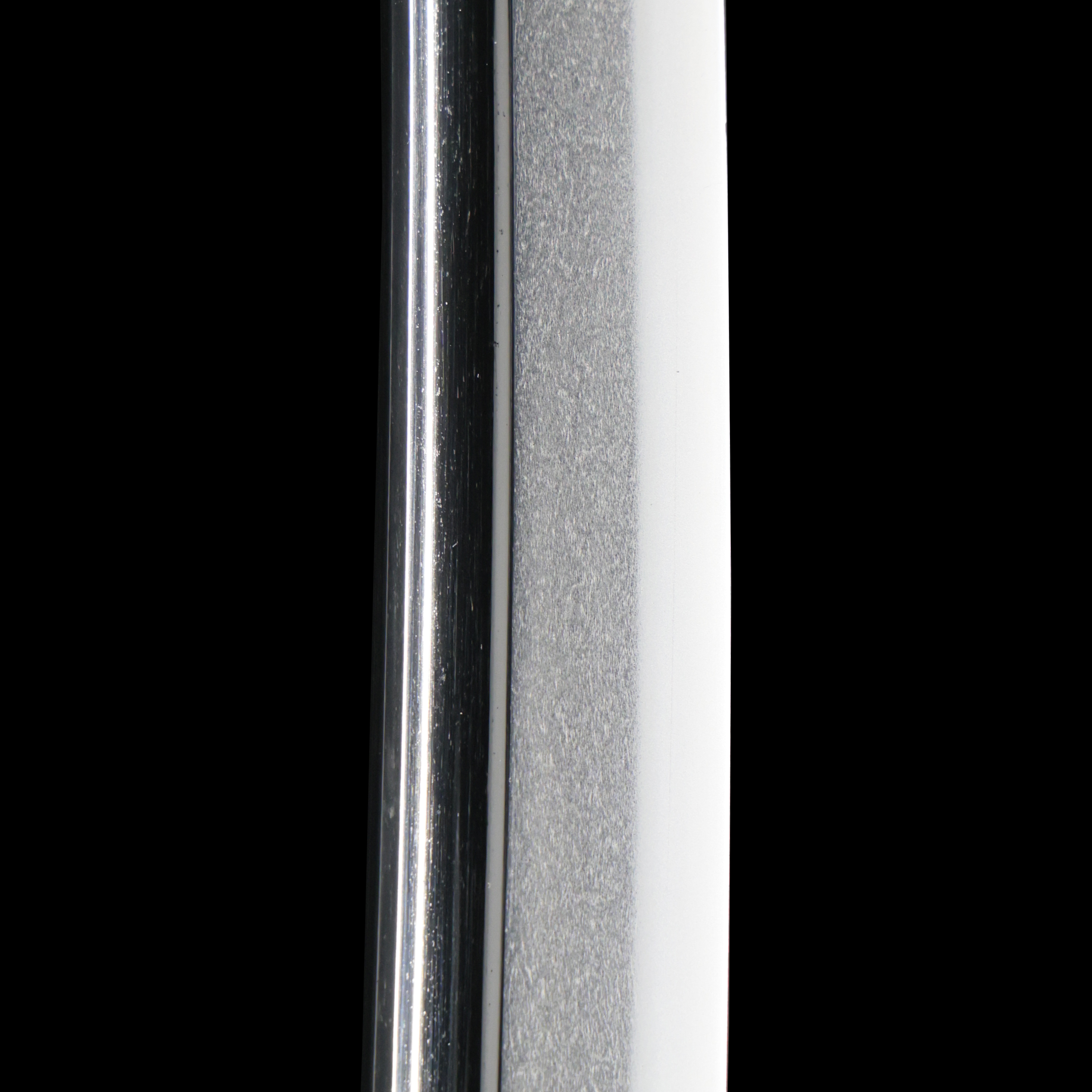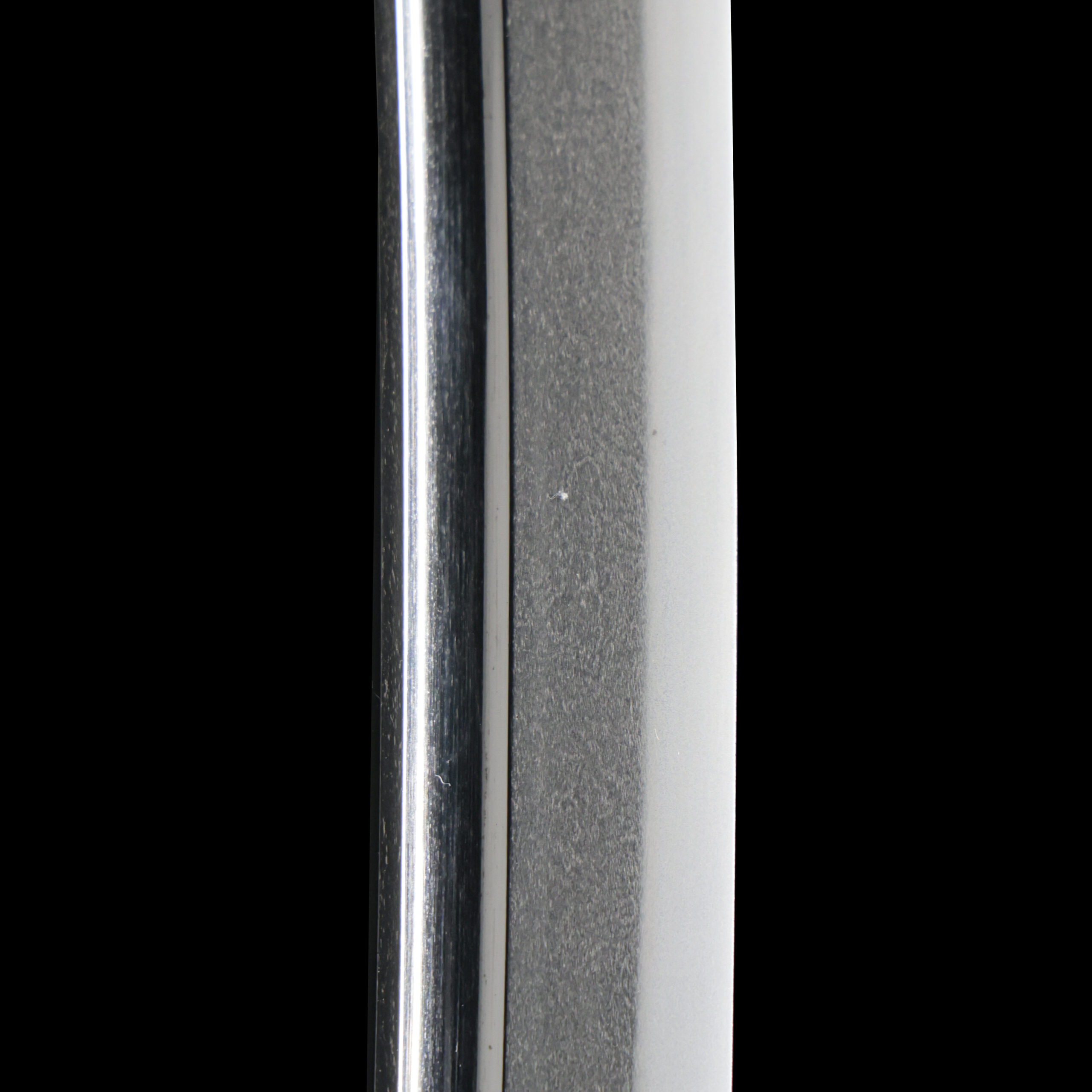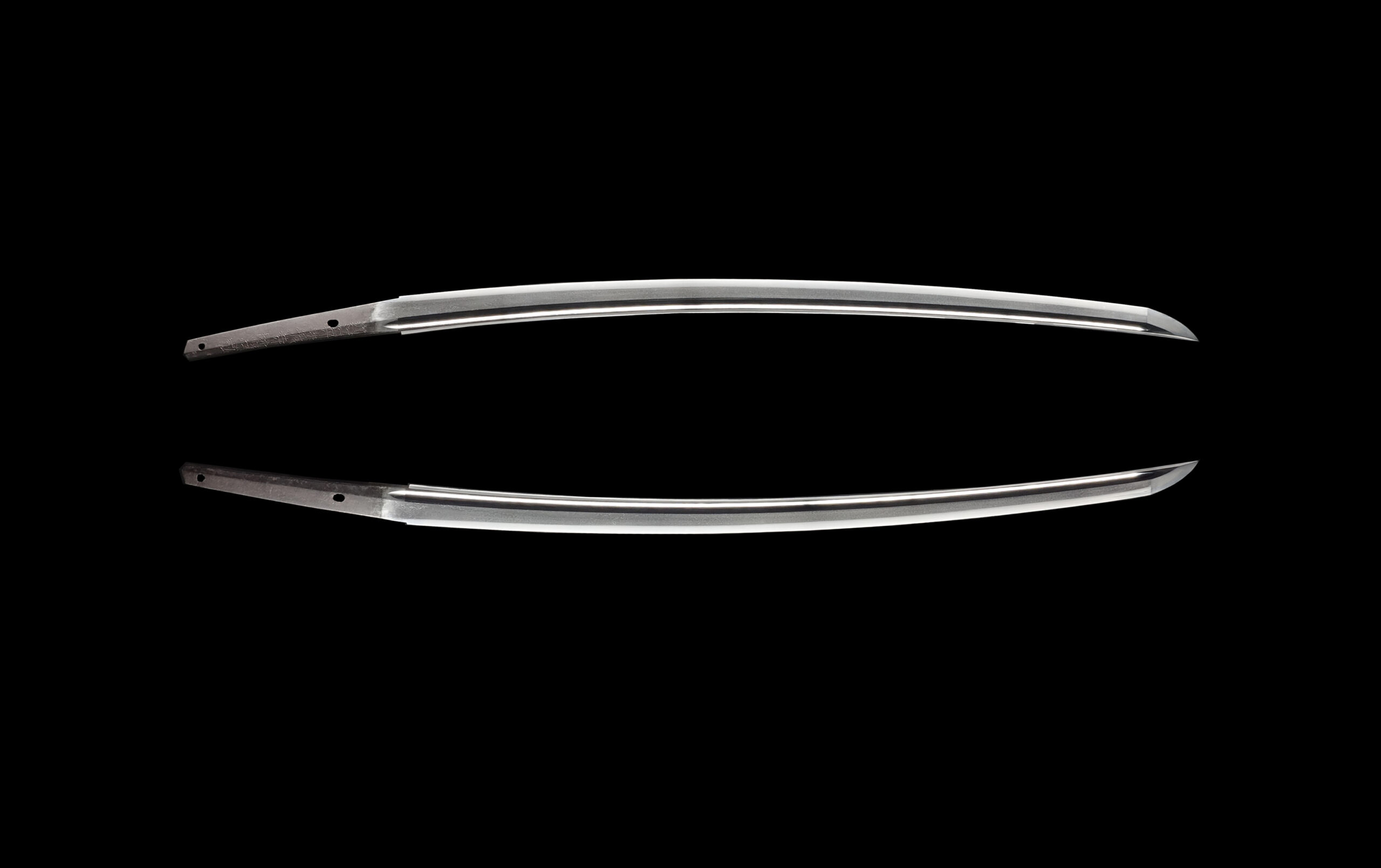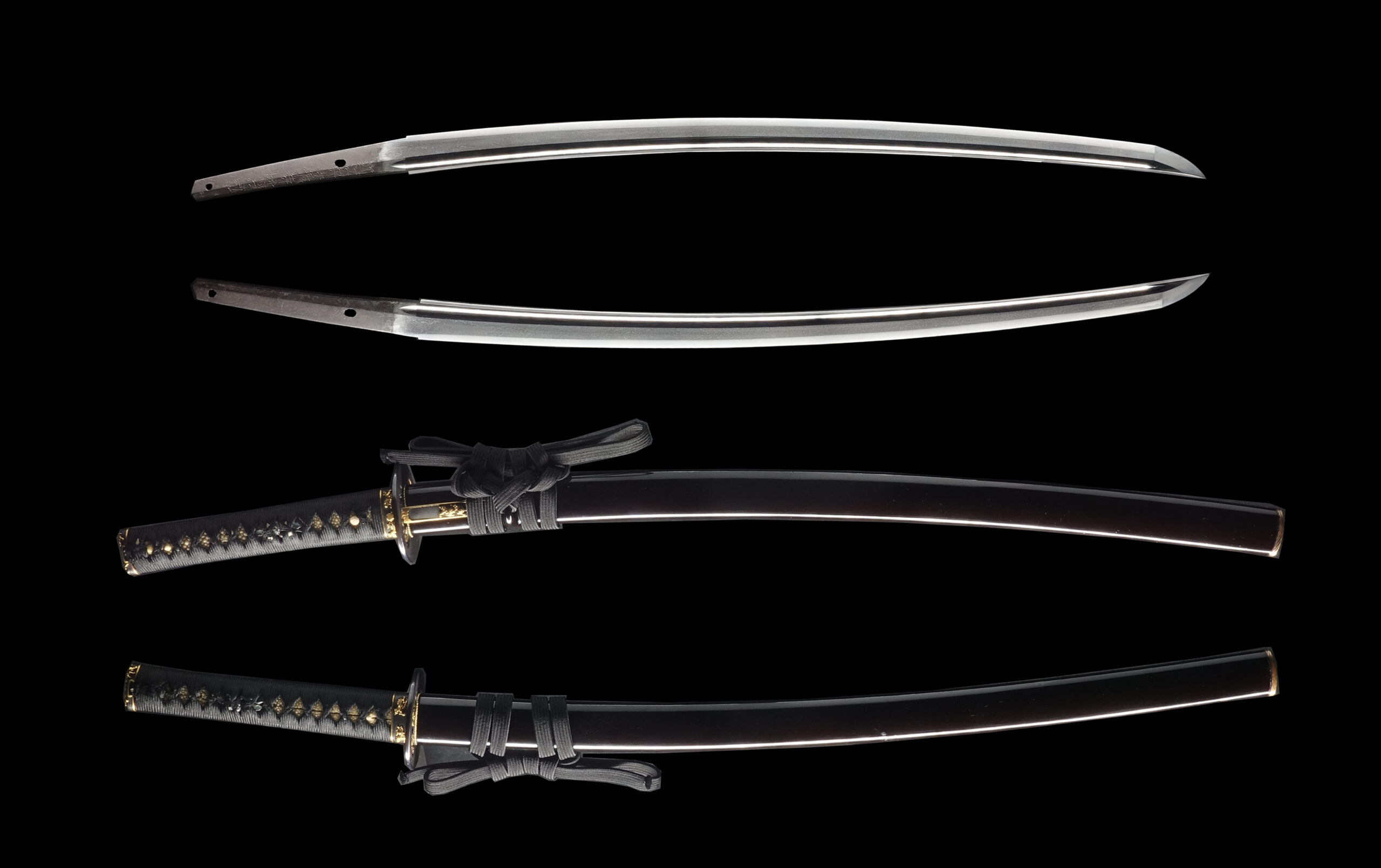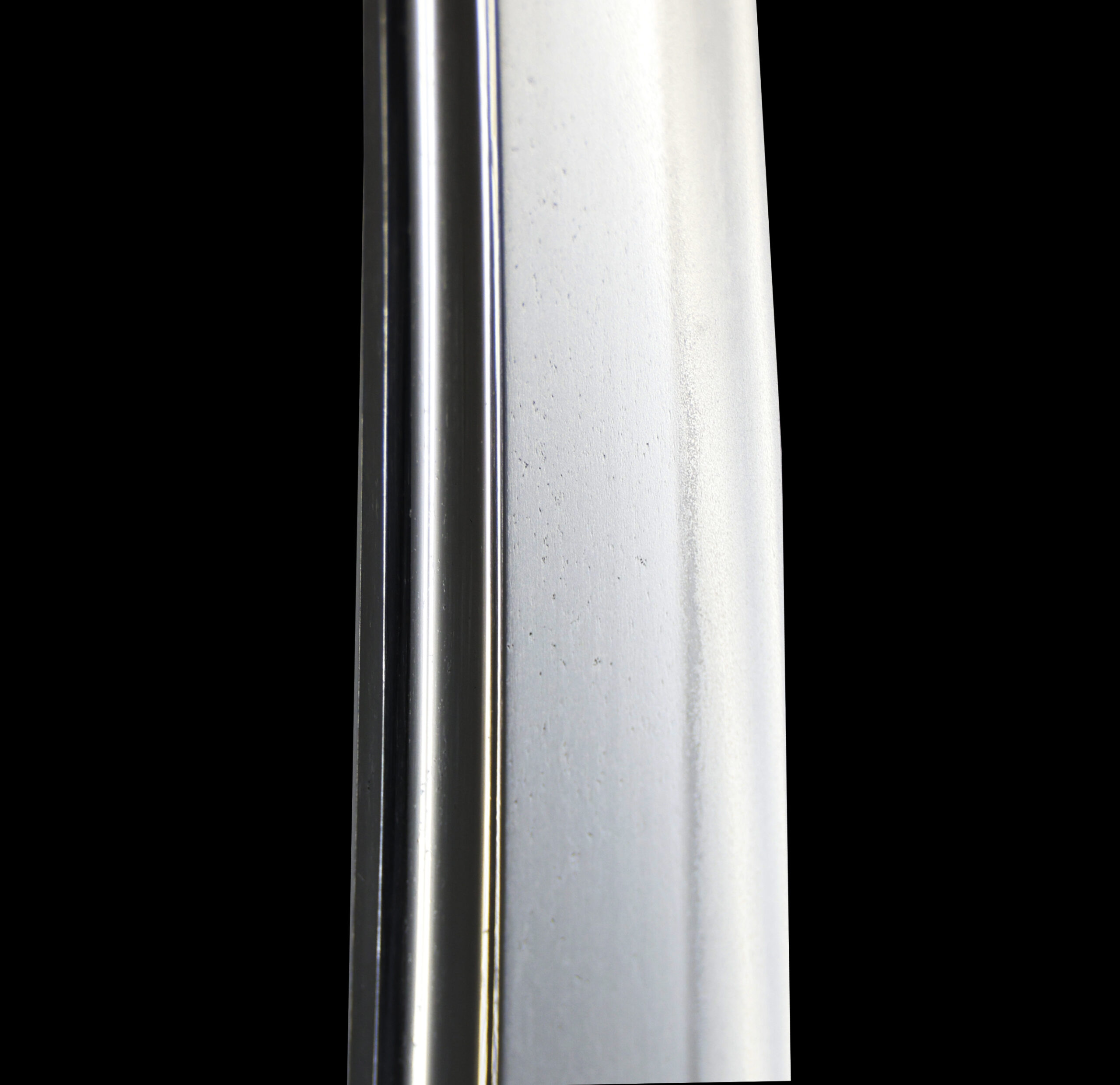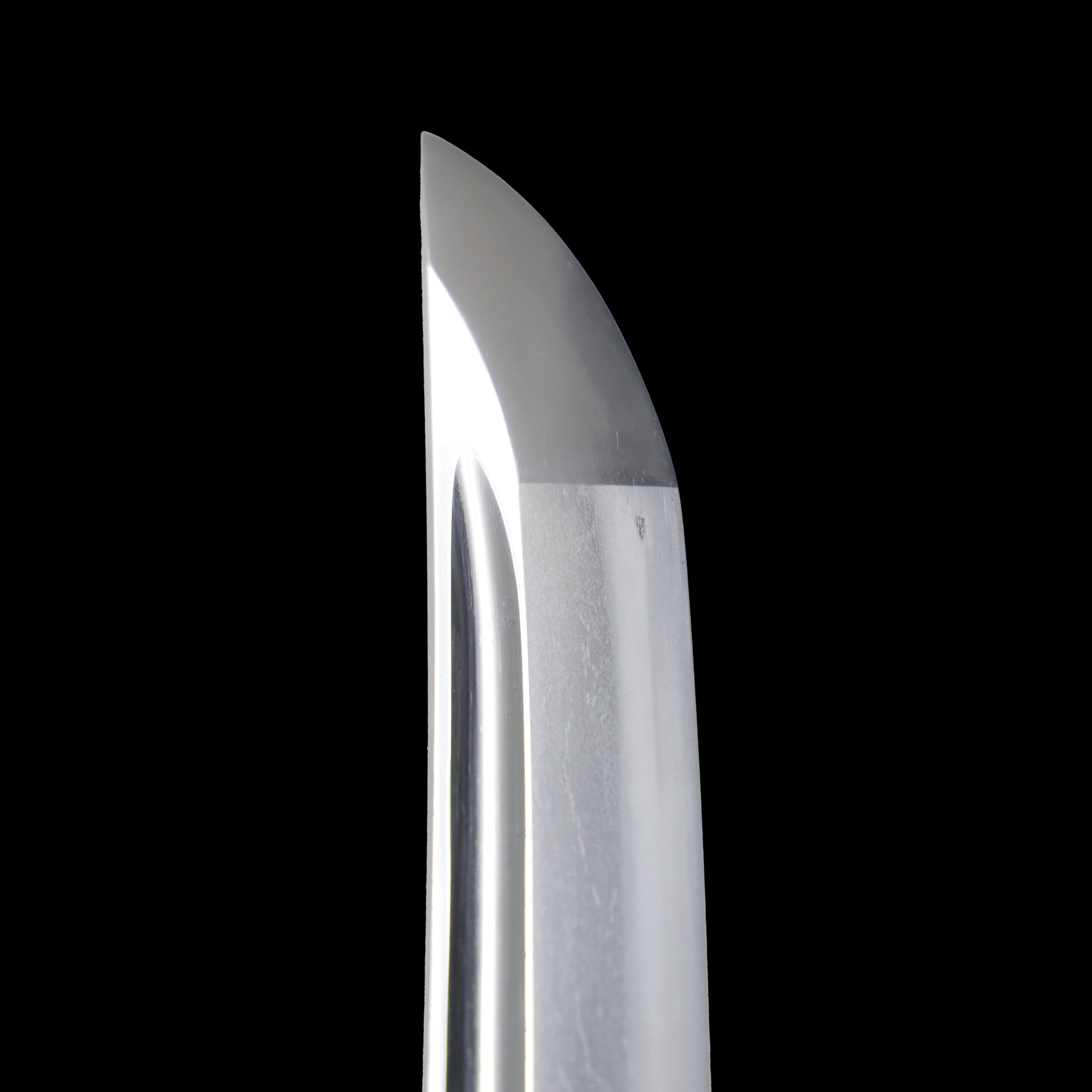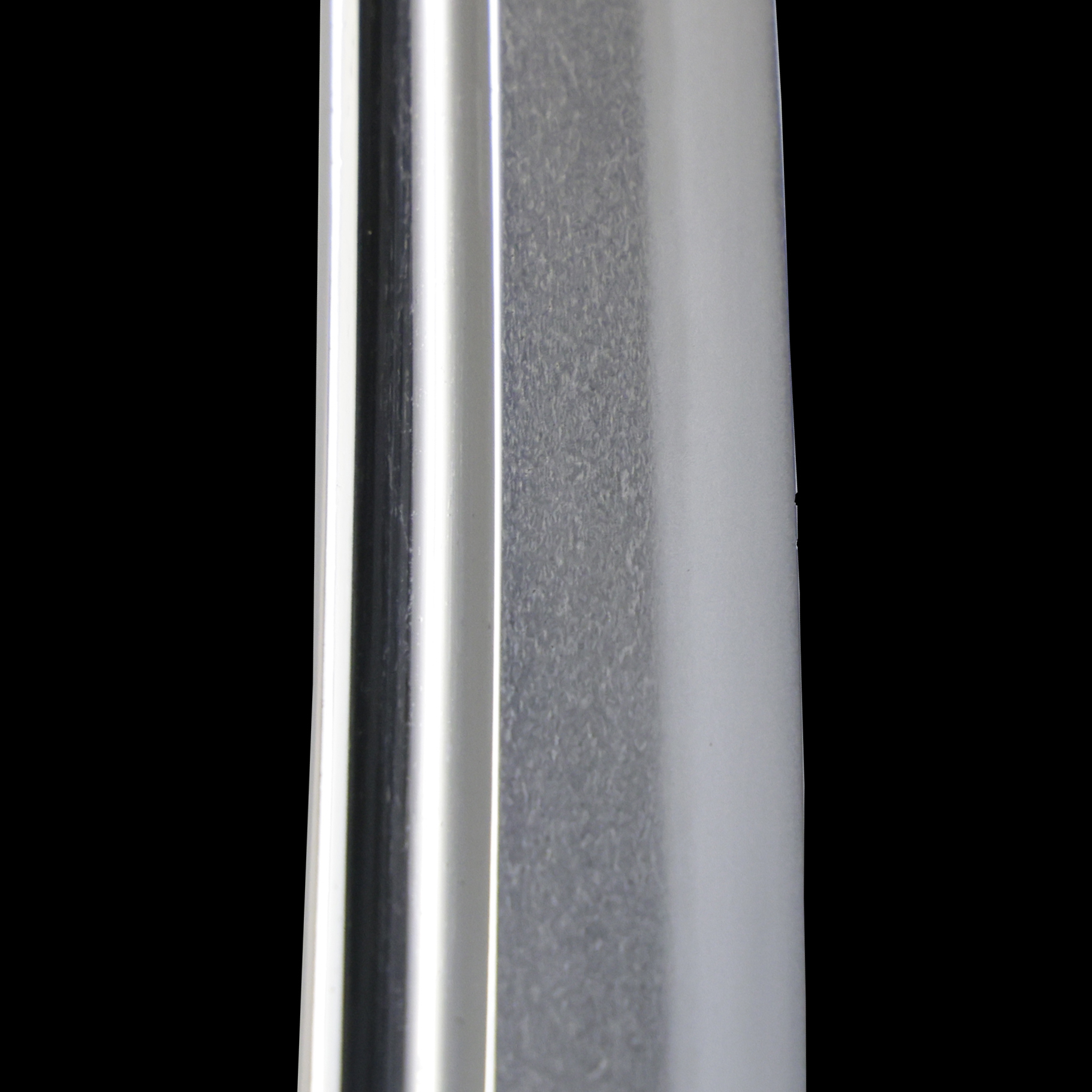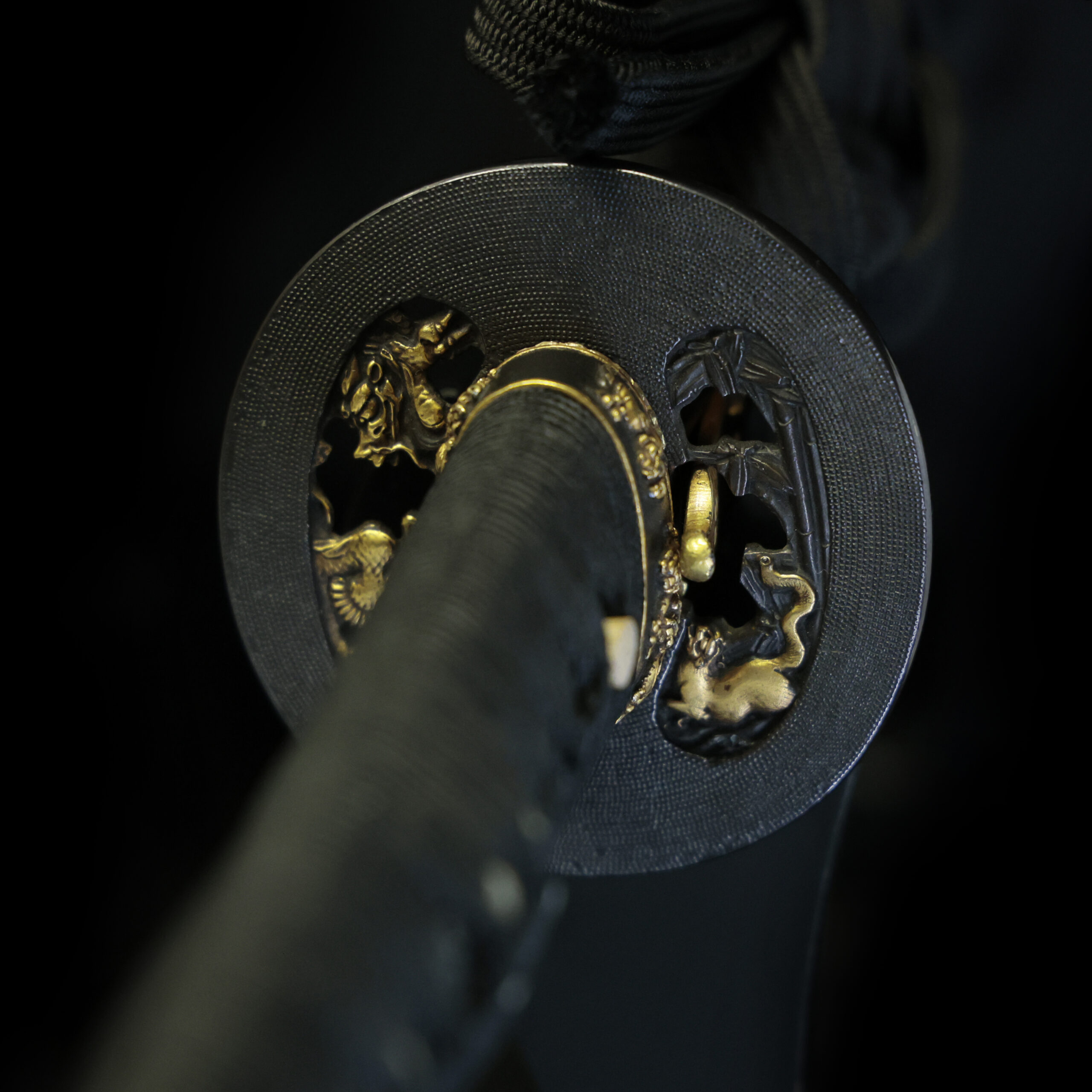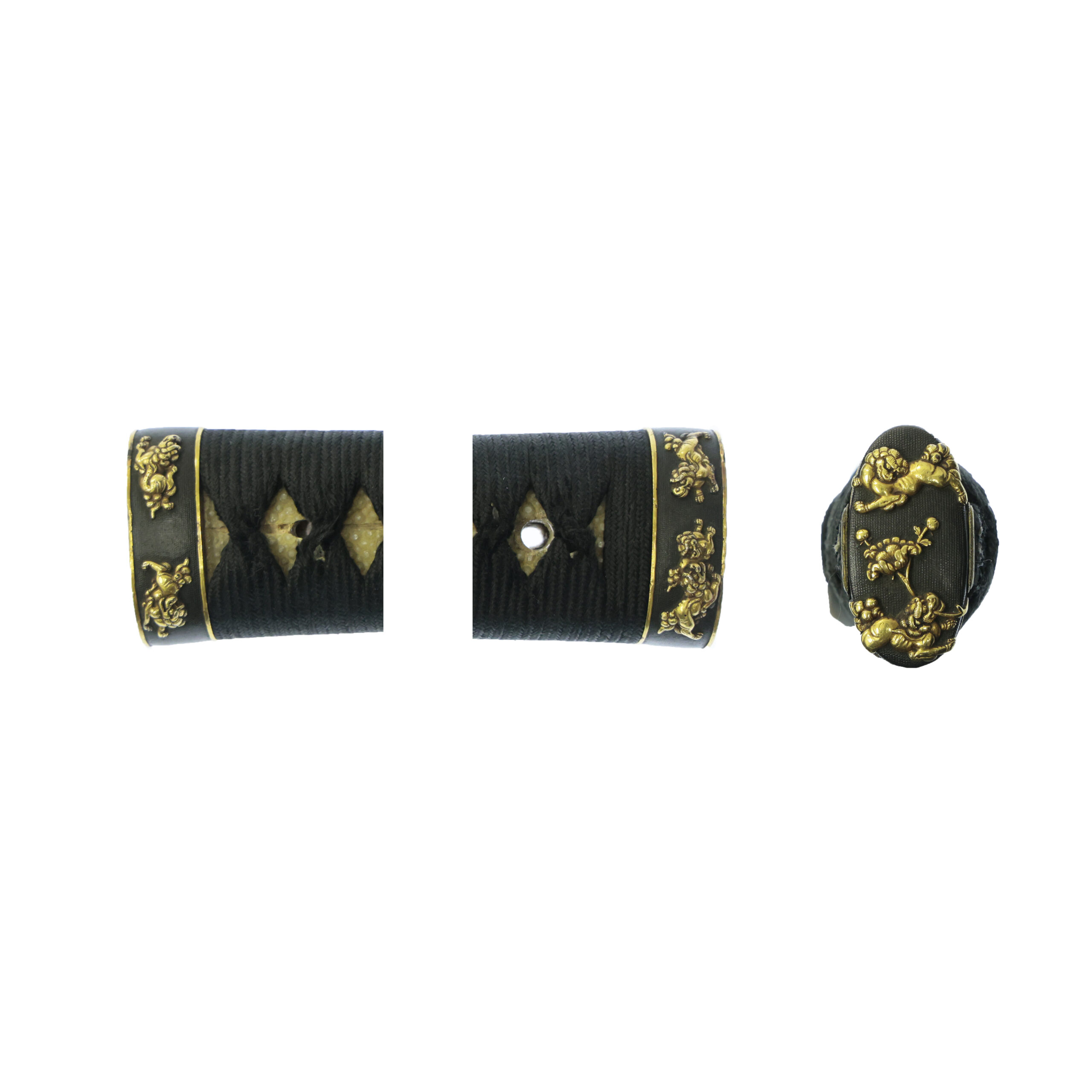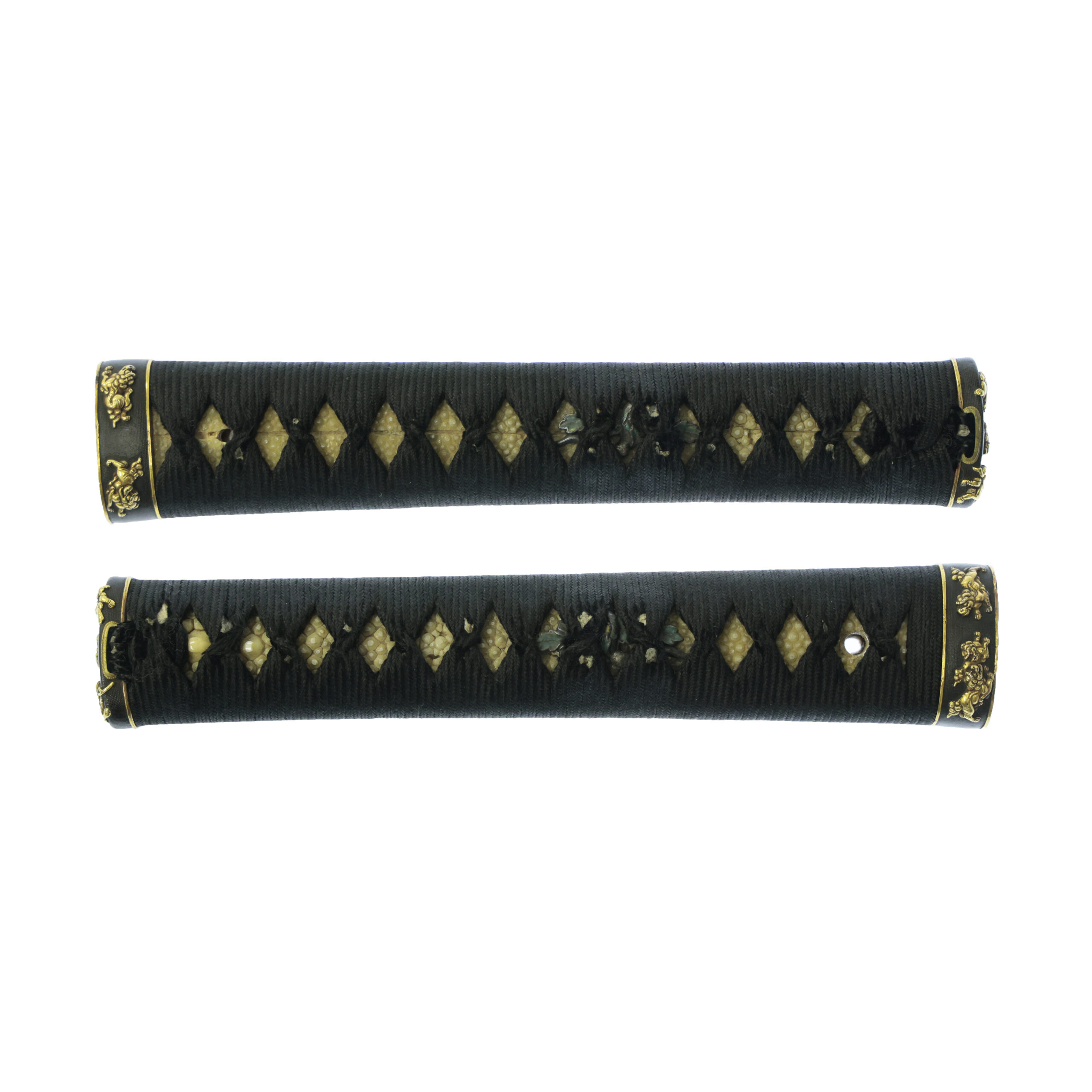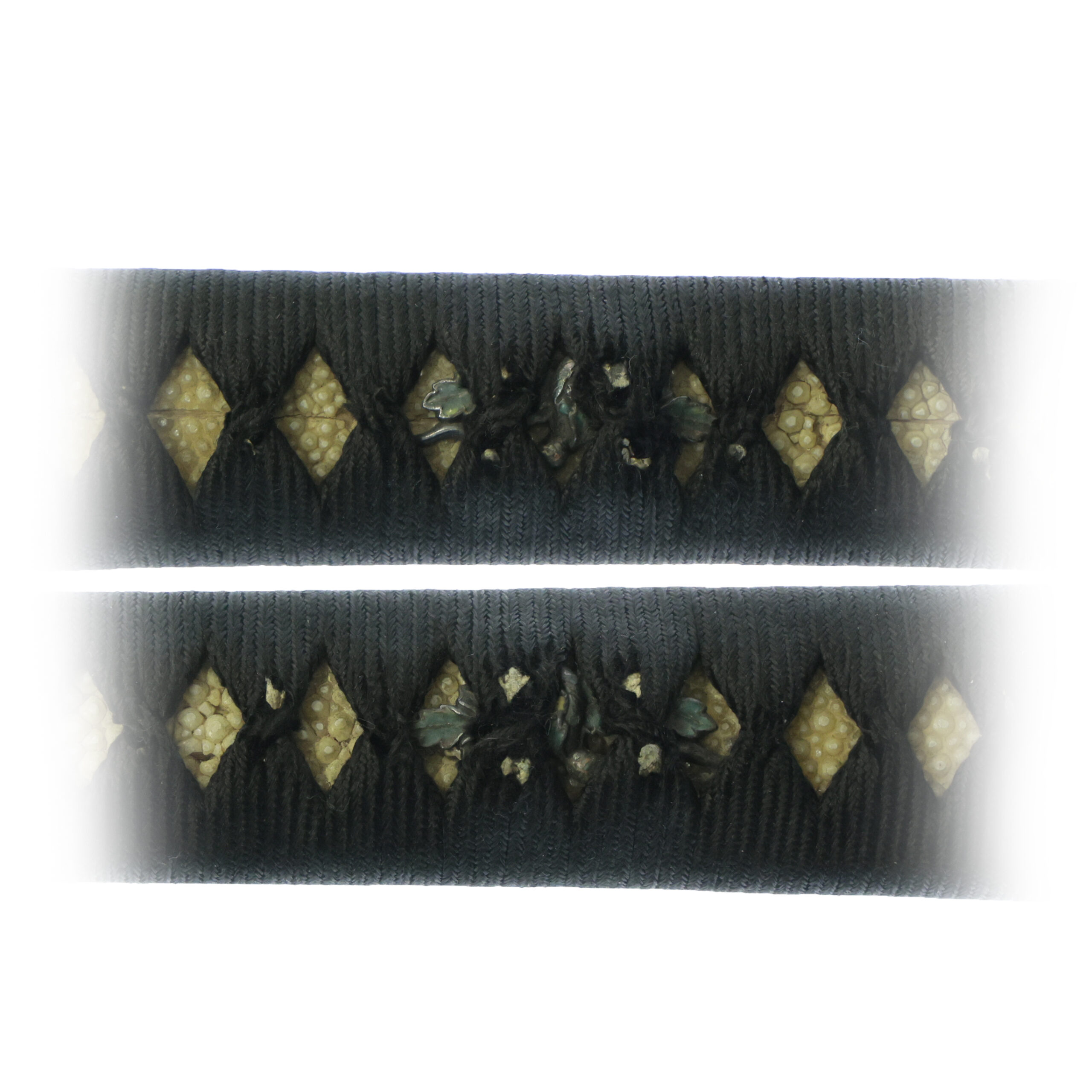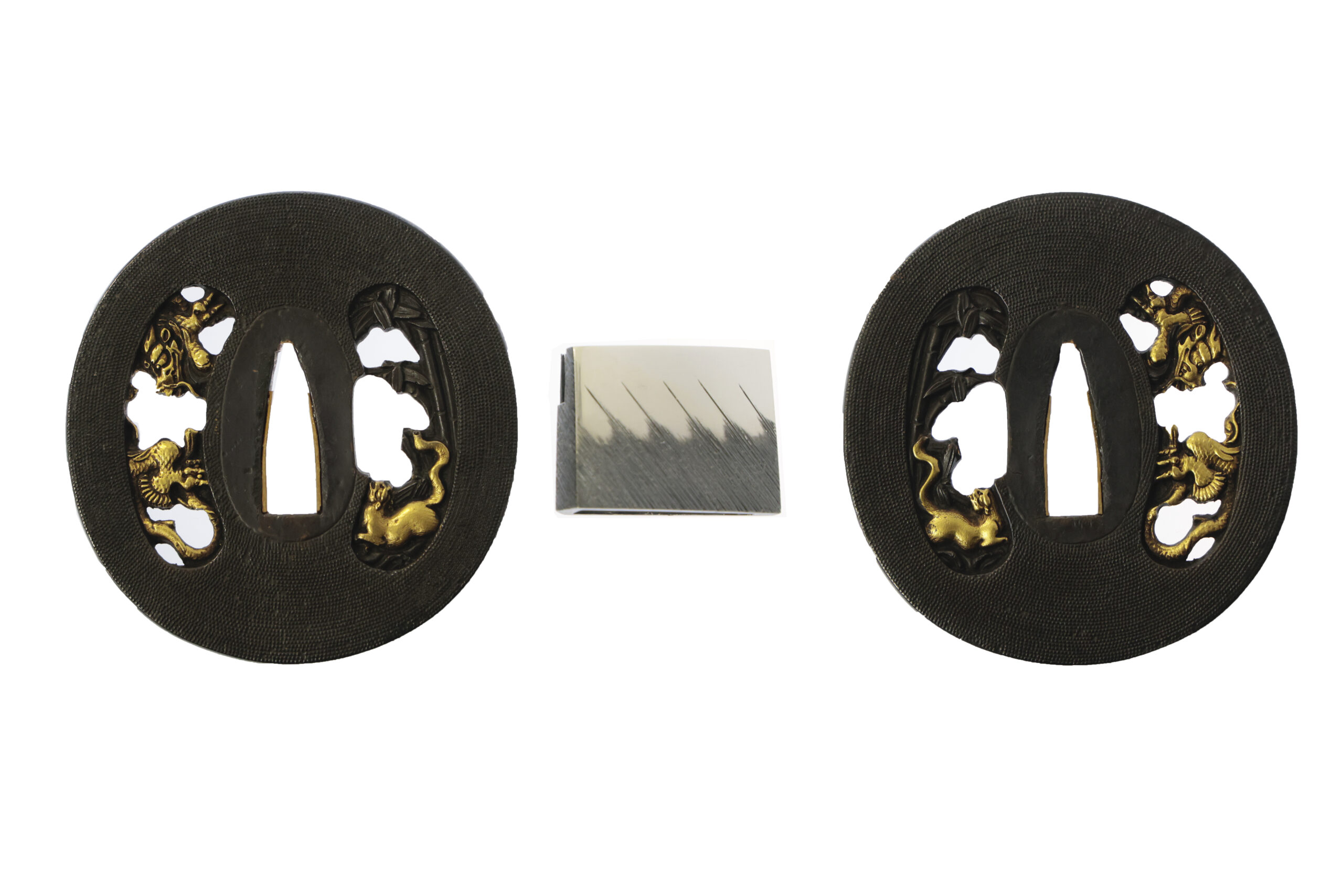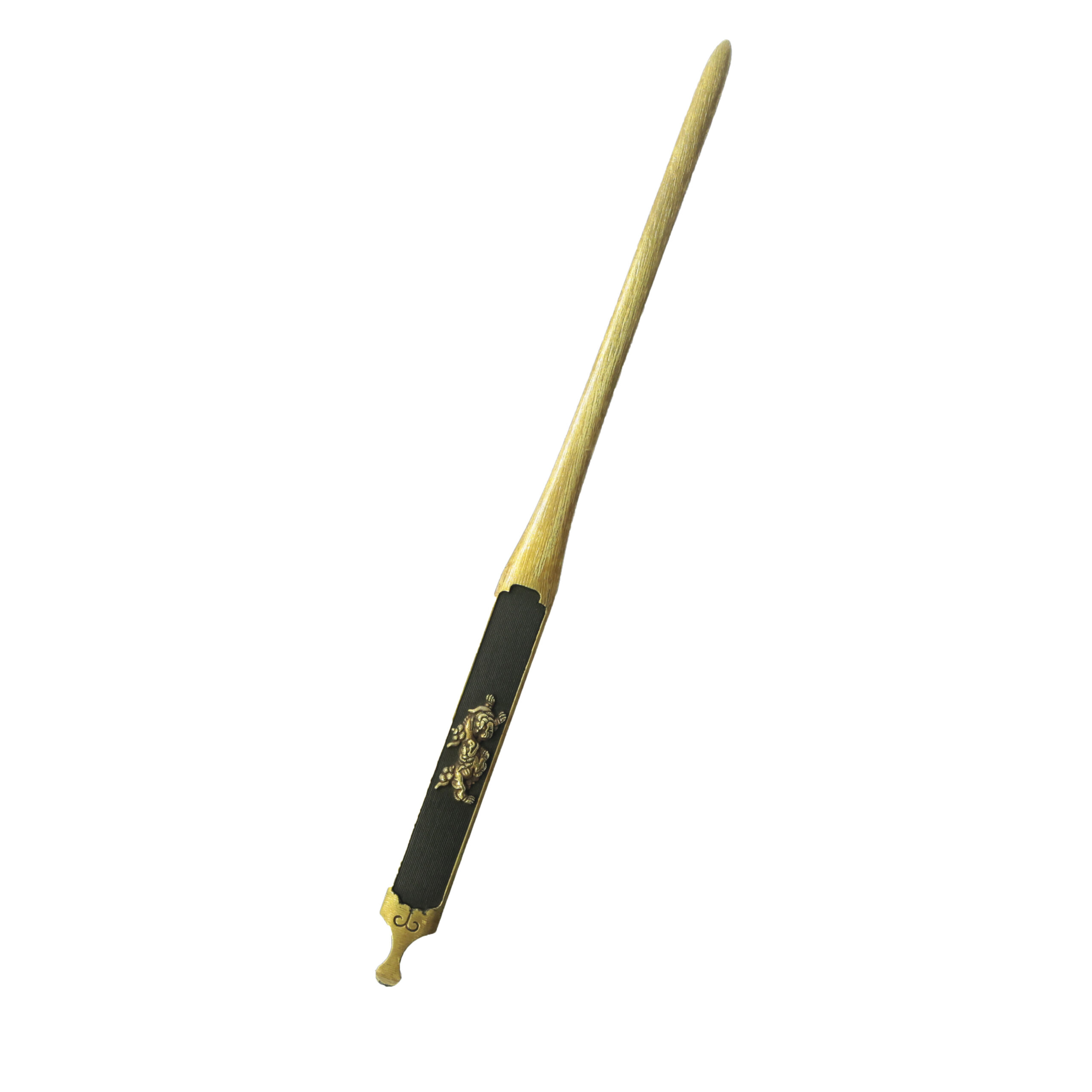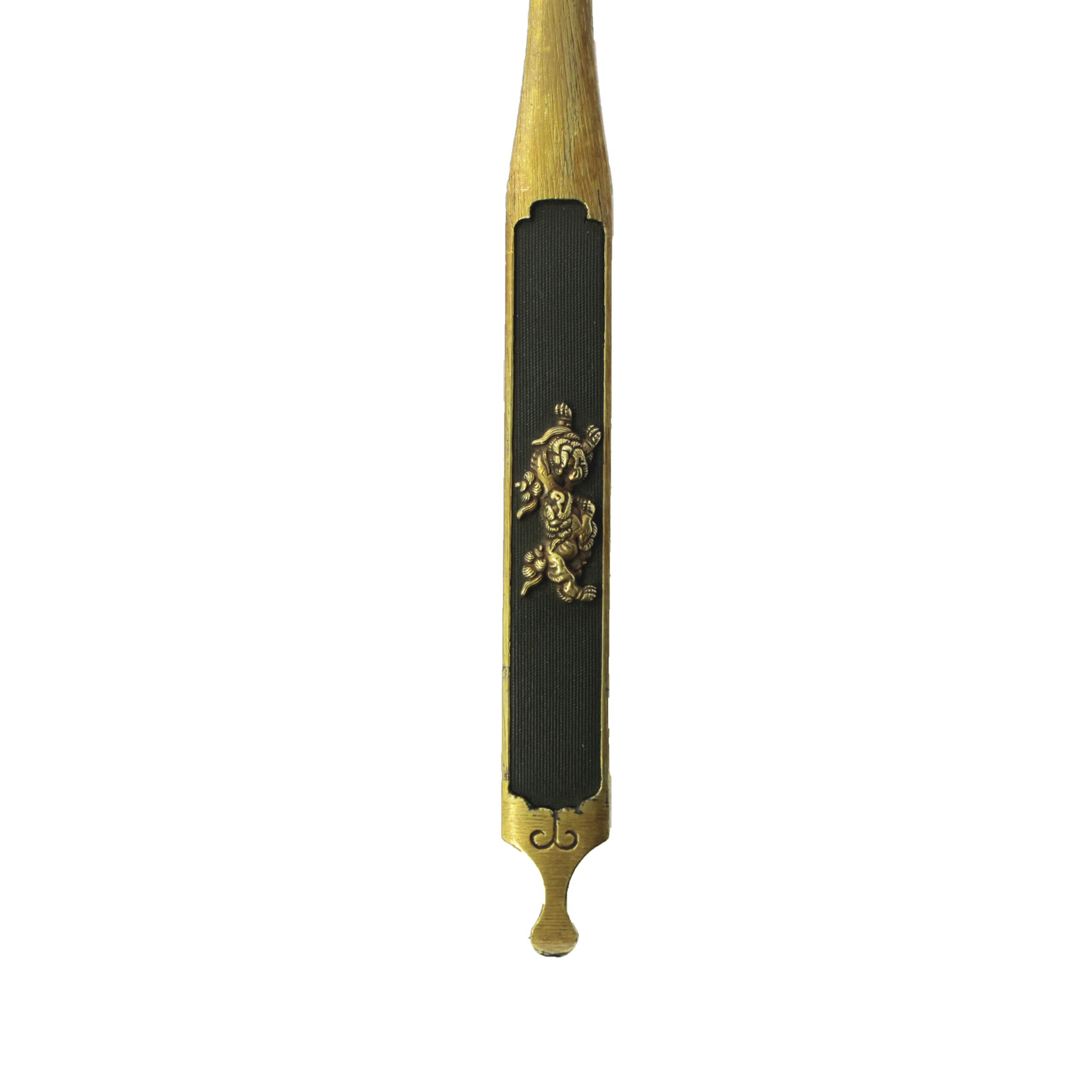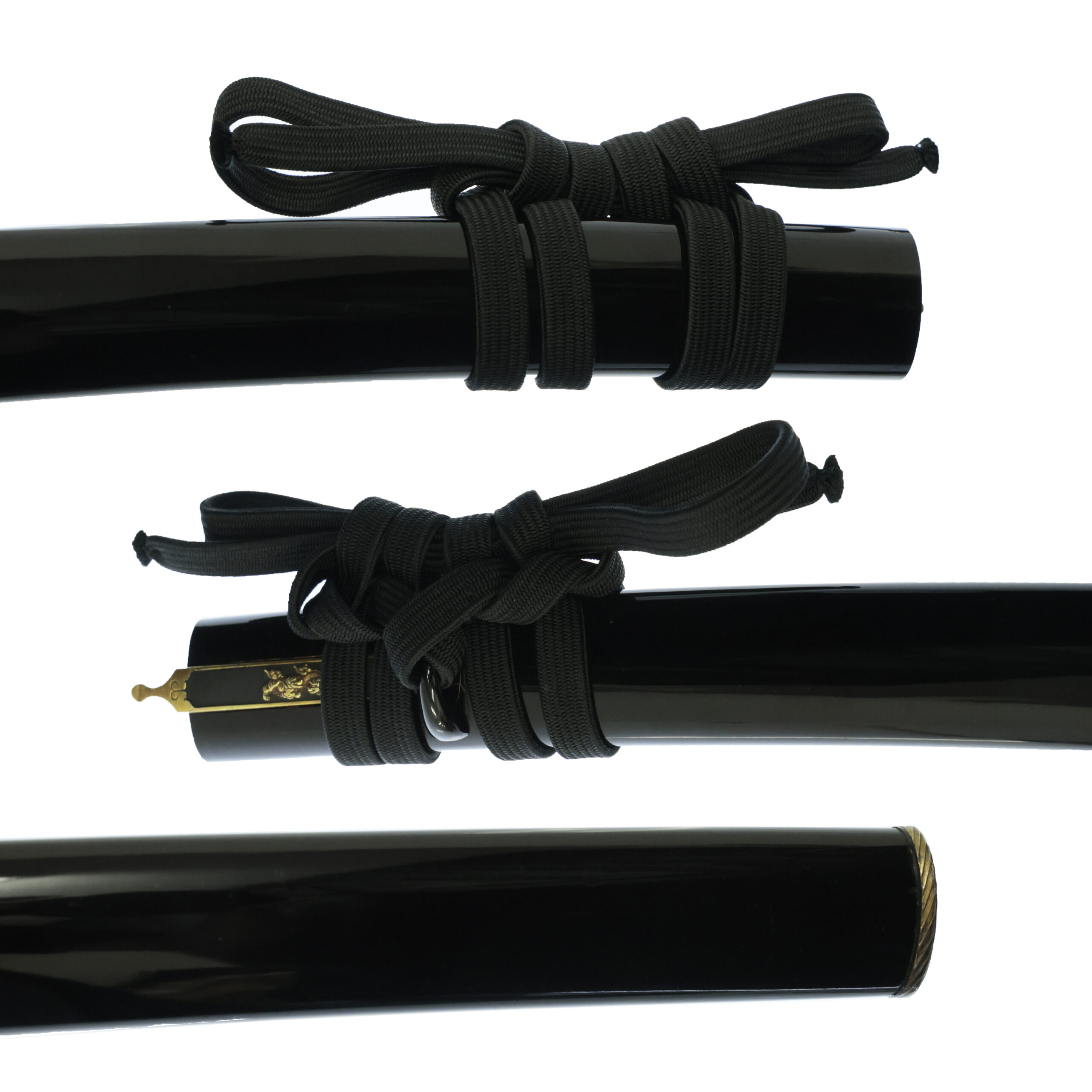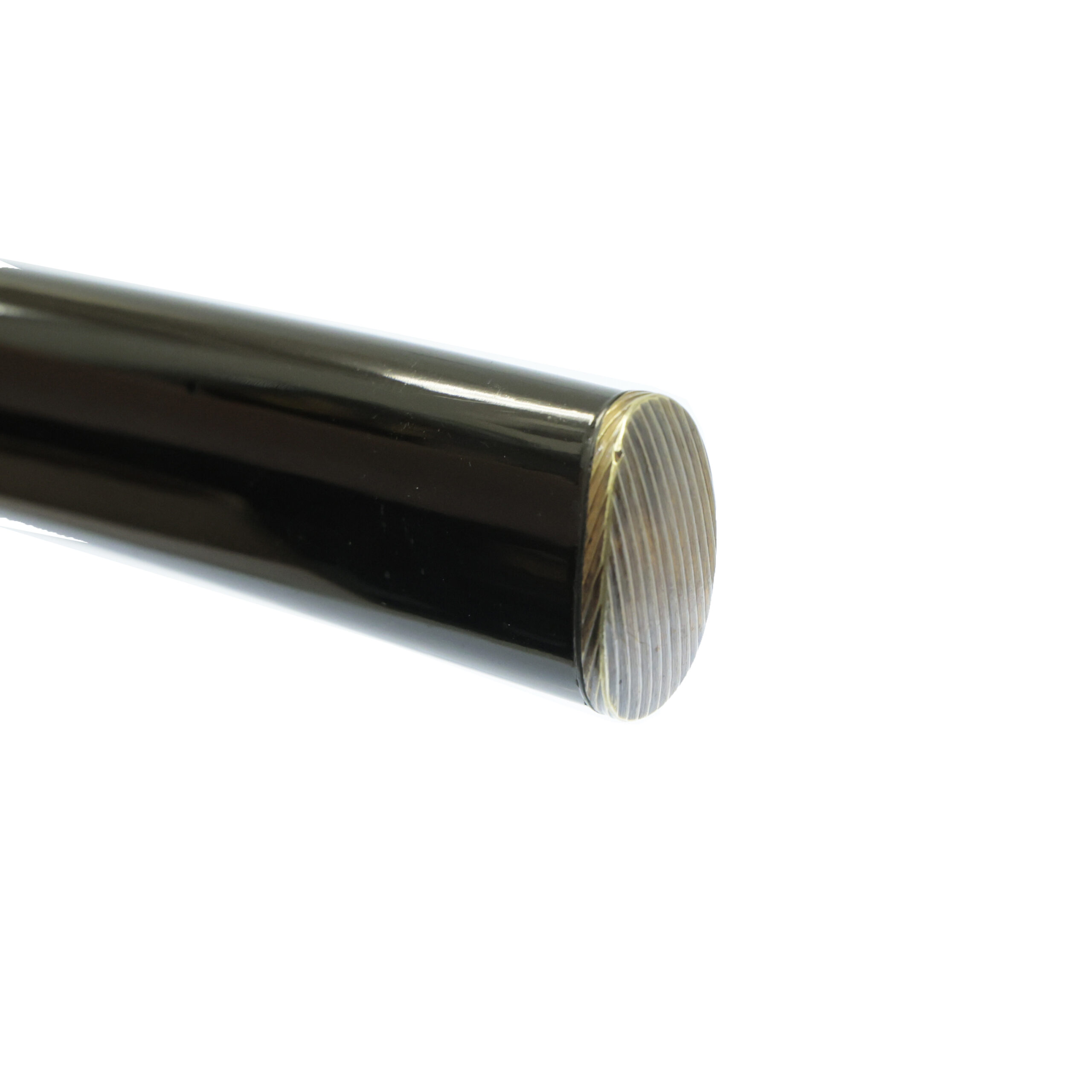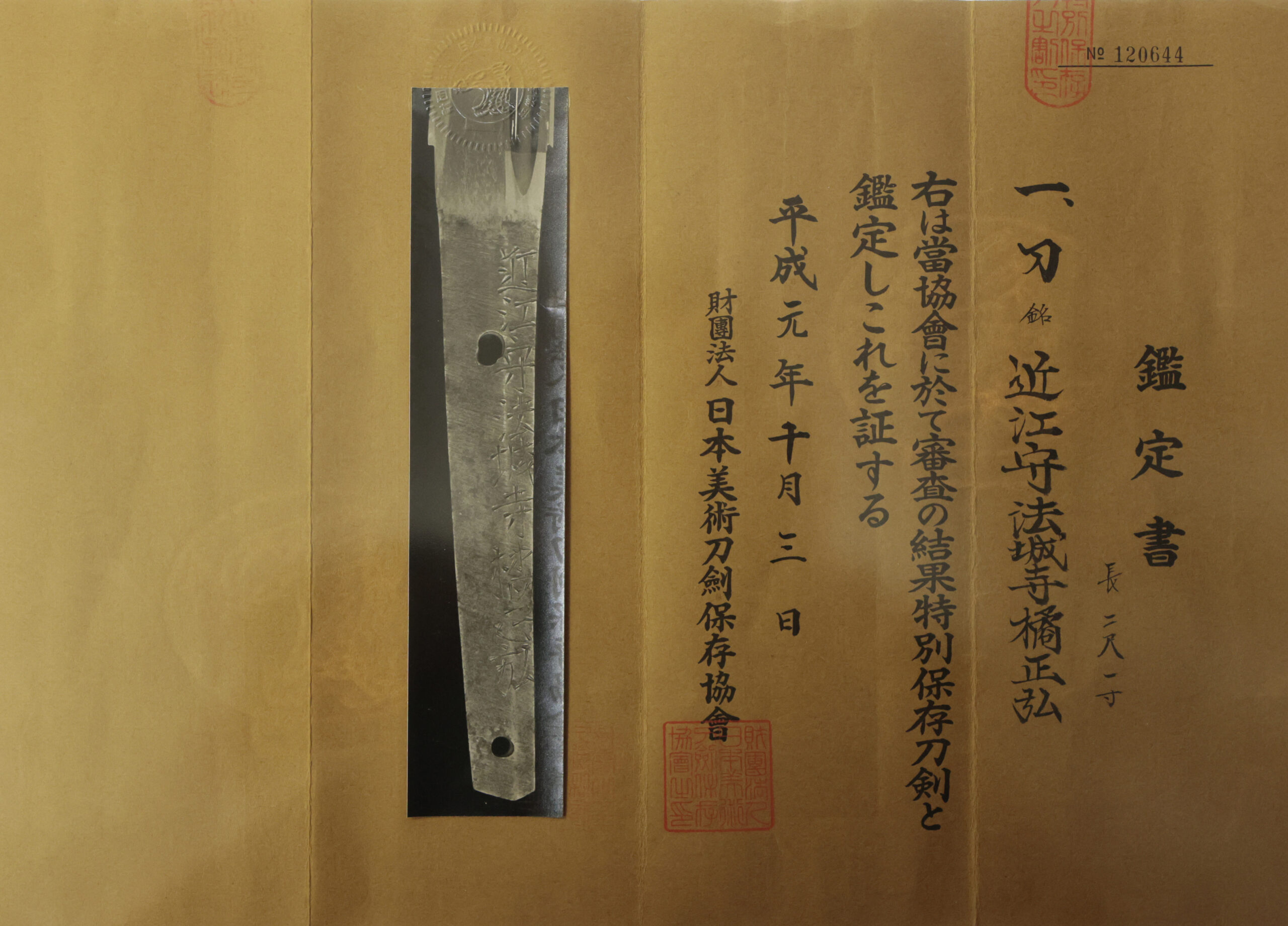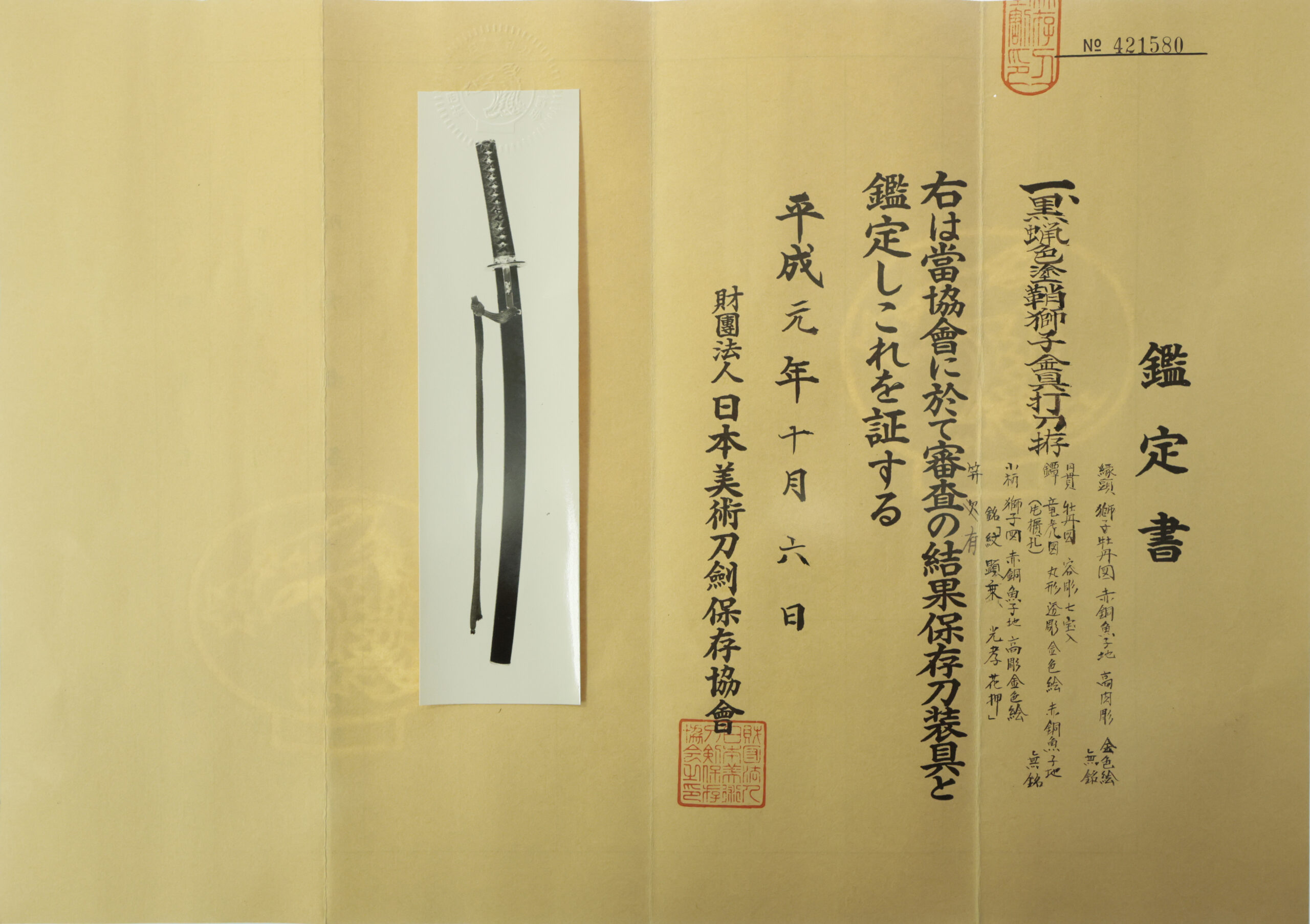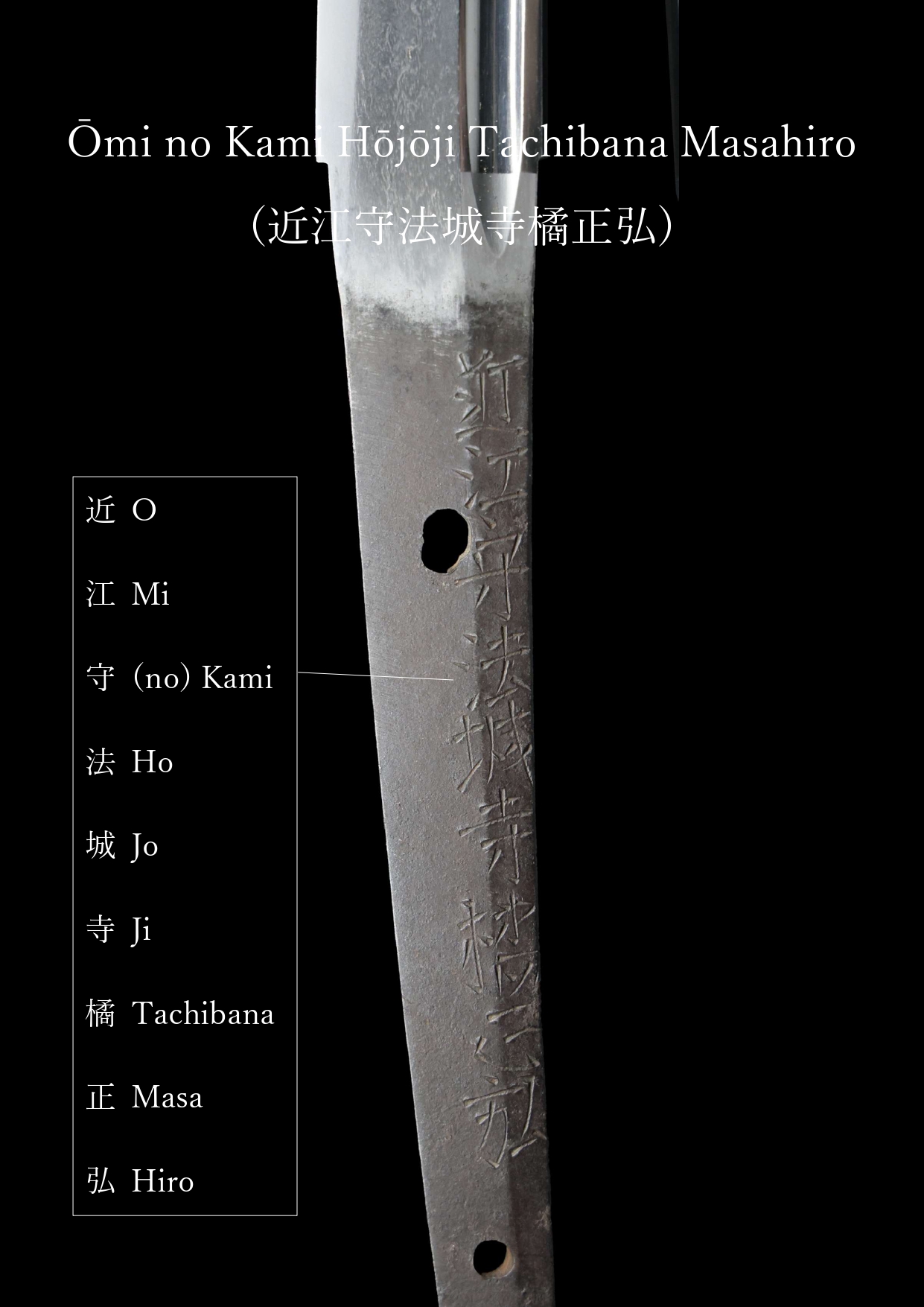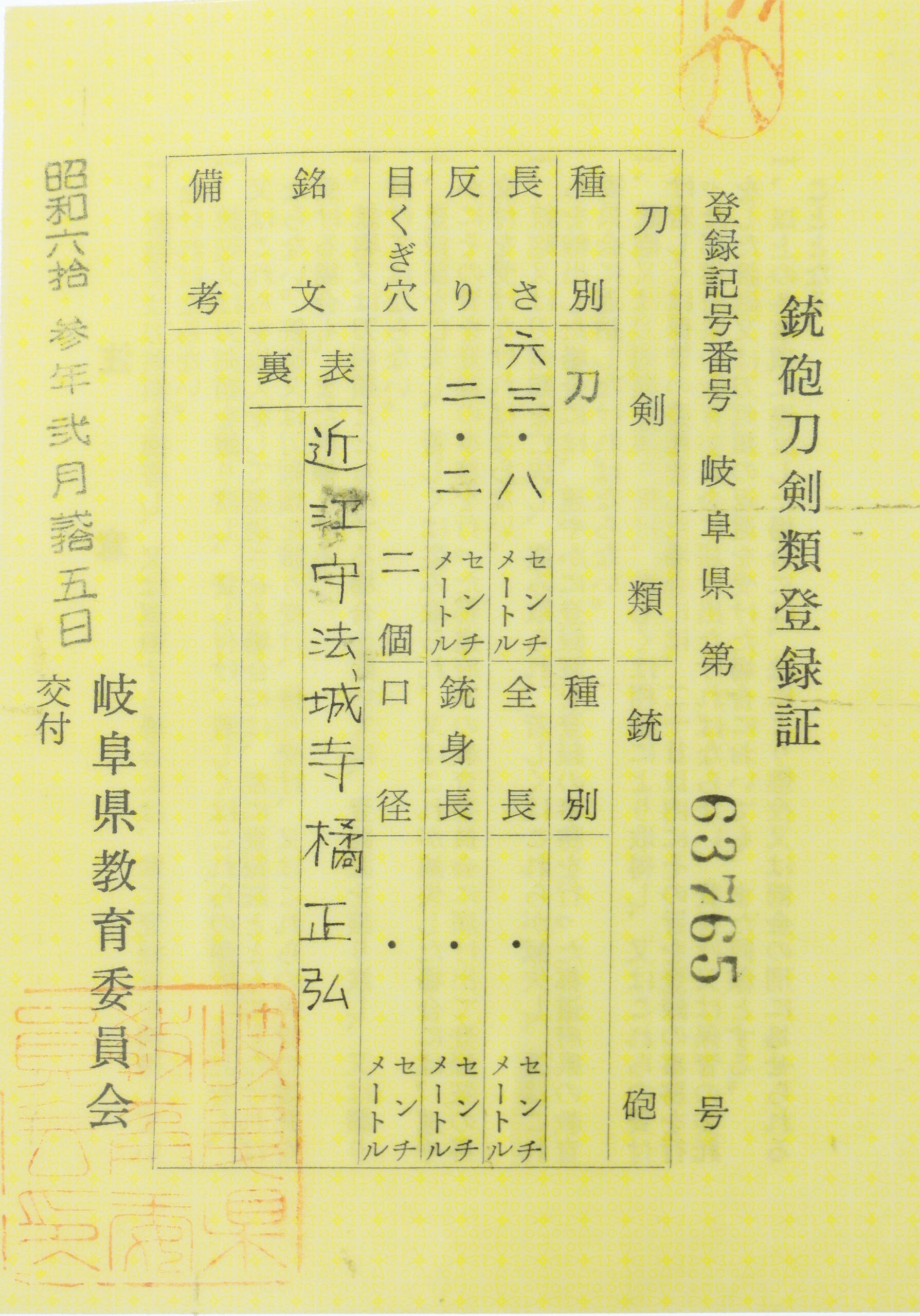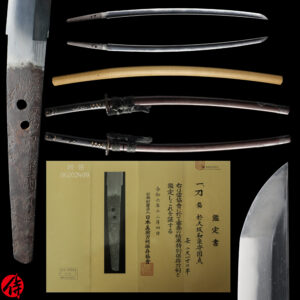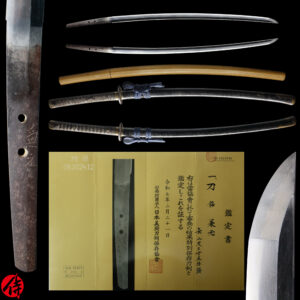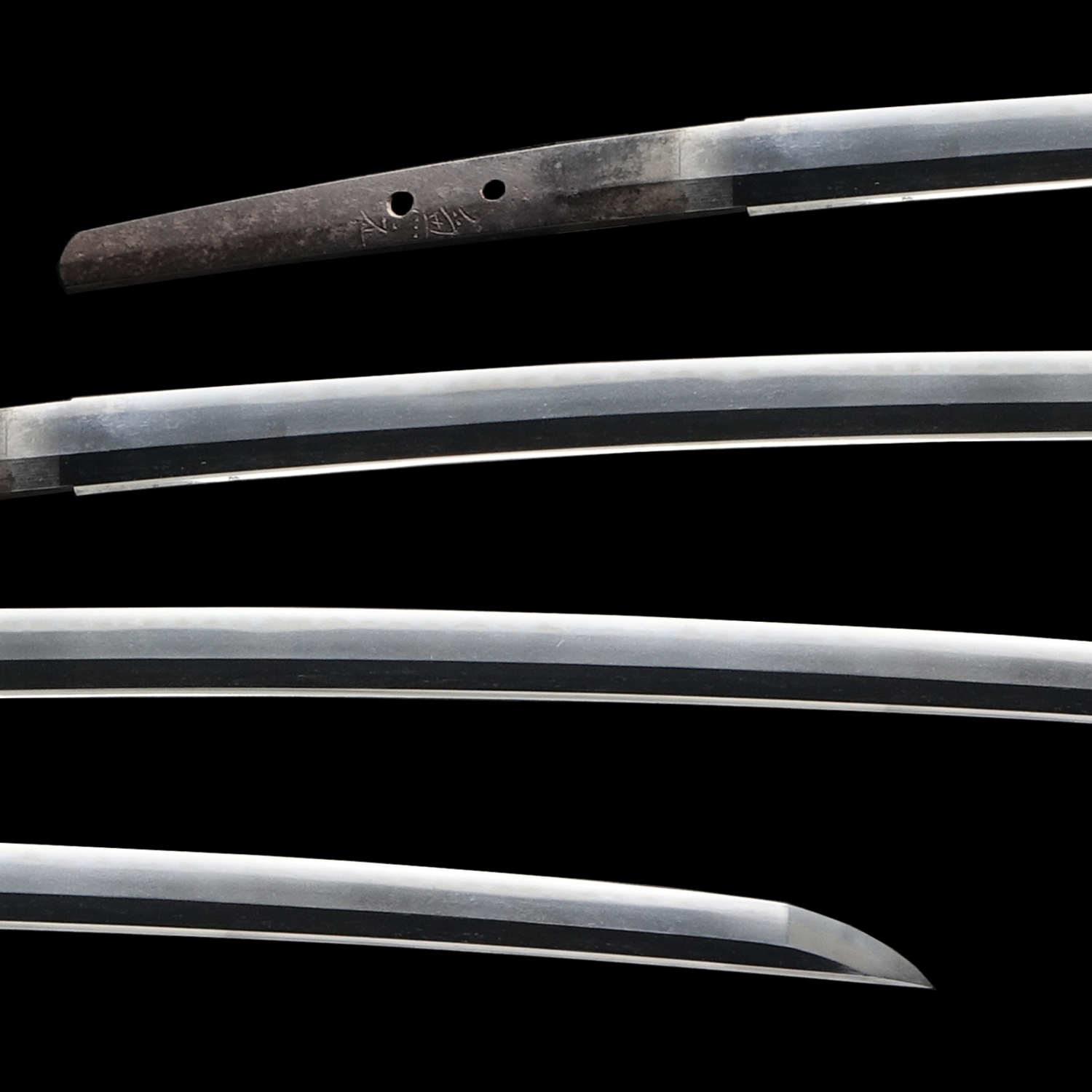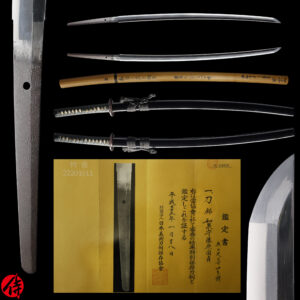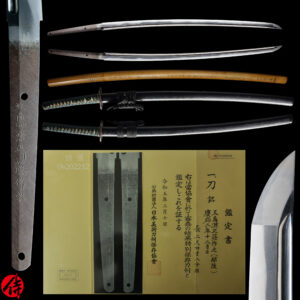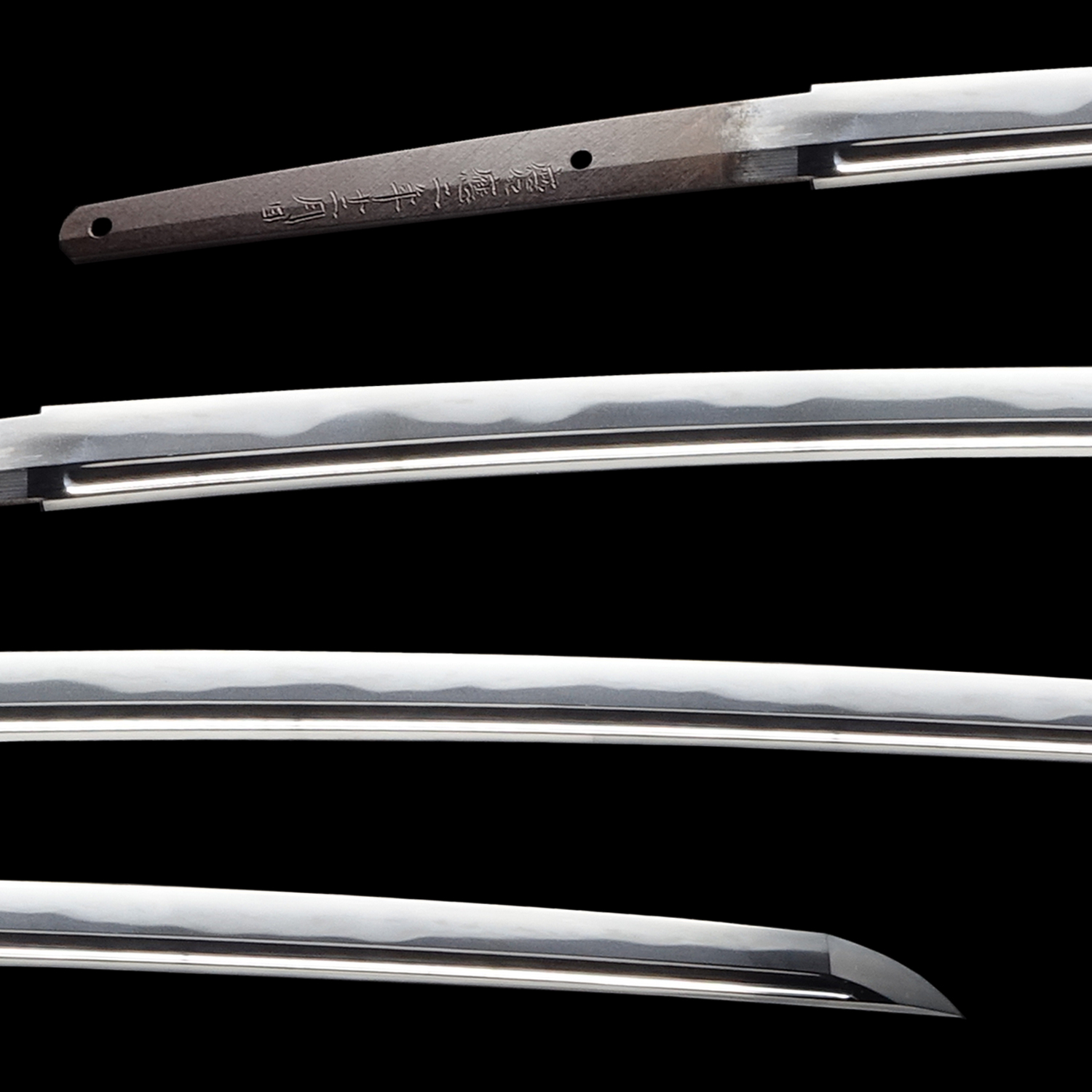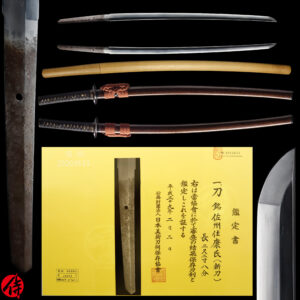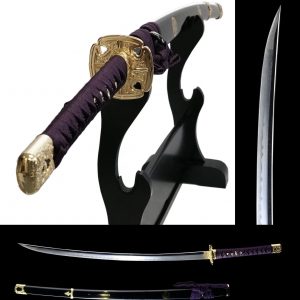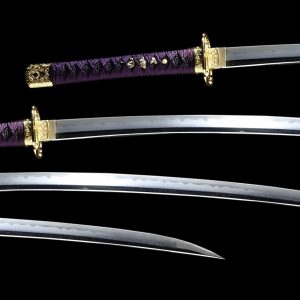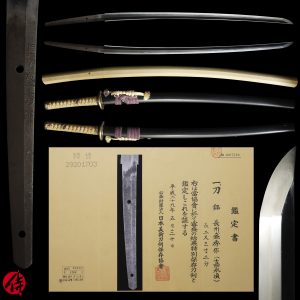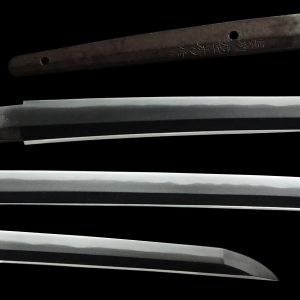Antique Japanese Sword Katana Signed by Masahiro with Tokubetsu Hozon Certificate
【Description】
This blade bears the signature of Ōmi no Kami Hōjōji Tachibana Masahiro (近江守法城寺橘正弘). The name Hōjōji refers to the prestigious school of swordsmiths in Edo, today’s Tokyo, while Ōmi no Kami is an honorary title granted by the Imperial Court to recognize outstanding craftsmanship, and Tachibana was his family name. Both the first-generation and the second-generation Masahiro received the title of Ōmi no Kami, and according to the NBTHK authentication, this sword was forged by the second-generation Masahiro. Such titles were reserved only for the most highly regarded smiths of the era, which speaks to the great reputation he enjoyed.
The first-generation Masahiro is believed to have been originally from the Tajima region in present-day Hyōgo Prefecture before moving to Edo, where he established a flourishing school. The second-generation Masahiro was active during the Enpō–Genroku era (1673–1704) and produced works that closely followed the style of his master. He also served as an Okakae-kaji, or official swordsmith, for Mito Mitsukuni, the feudal lord of the Mito domain and grandson of Tokugawa Ieyasu, one of the most renowned samurai in Japanese history. That the Tokugawa family itself recognized Masahiro’s skill demonstrates the prestige and high standing of his work, and it is very likely that this blade was commissioned for a high-ranking samurai residing in Edo.
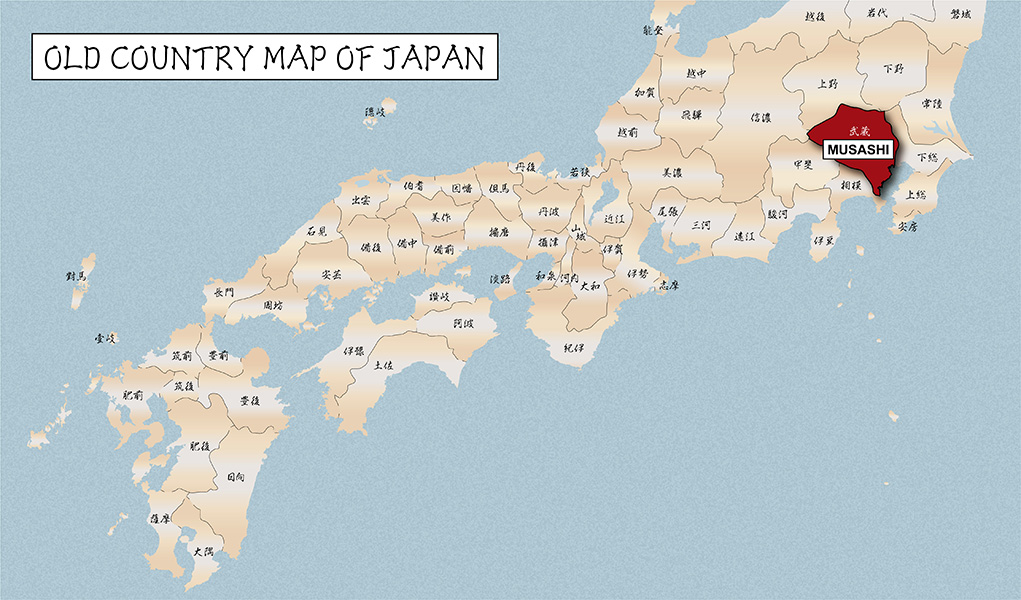
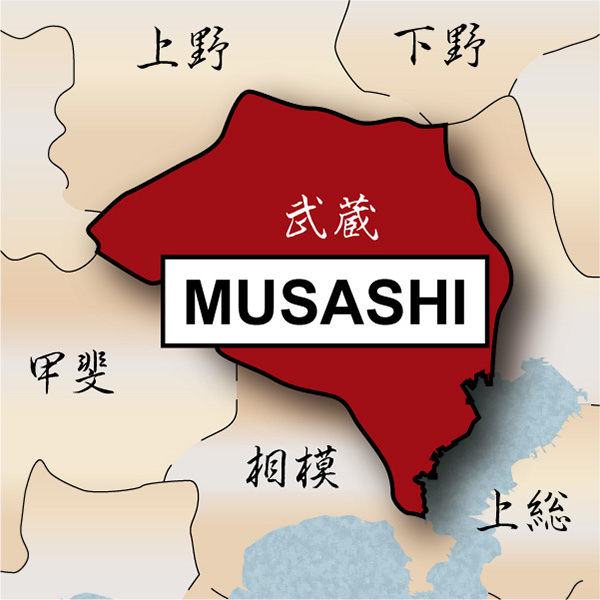
The blades forged by members of Edo Hōjōji swordsmiths closely resemble Kotetsu (虎徹), one of the most famous swordsmiths. Other renowned swordsmiths who belonged to this school are Kaneshige, Sadakuni, and Yoshitsugu. The school was prosperous during the Edo period and forged many blades for the Edo government.
It is appraised as a Tokubetsu Hozon Token (特別保存刀剣) issued by NBTHK (Nihon Bijutsu Touken Hozon Kyokai:日本美術刀剣保存協会). This authentication paper was only given to authentic Japanese swords, especially well preserved and high quality with artistic value.
*Please keep in mind that there are a couple of Kitae Kizu/black rust spots on this blade. If you like to know the detailed condition, please feel free to contact us.
【Blade】
Cutting Edge Length(Nagasa):63.8 cm (25.1 inches)
Curvature(Sori):2.2 cm (0.86 inches)

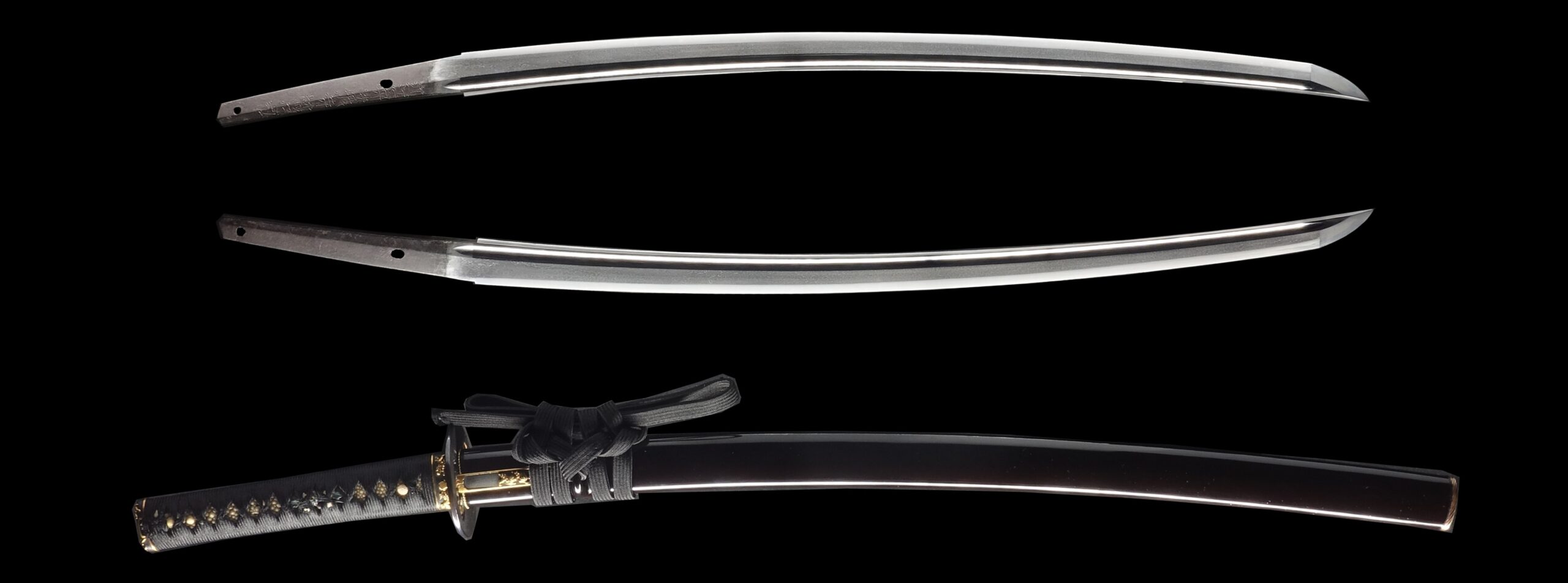
Hamon:
The crystalline structure which forms along the cutting edge of a blade as a result of the hardening process
Jimon(Jihada):
visible steel surface pattern created by folding and hammering during forging process
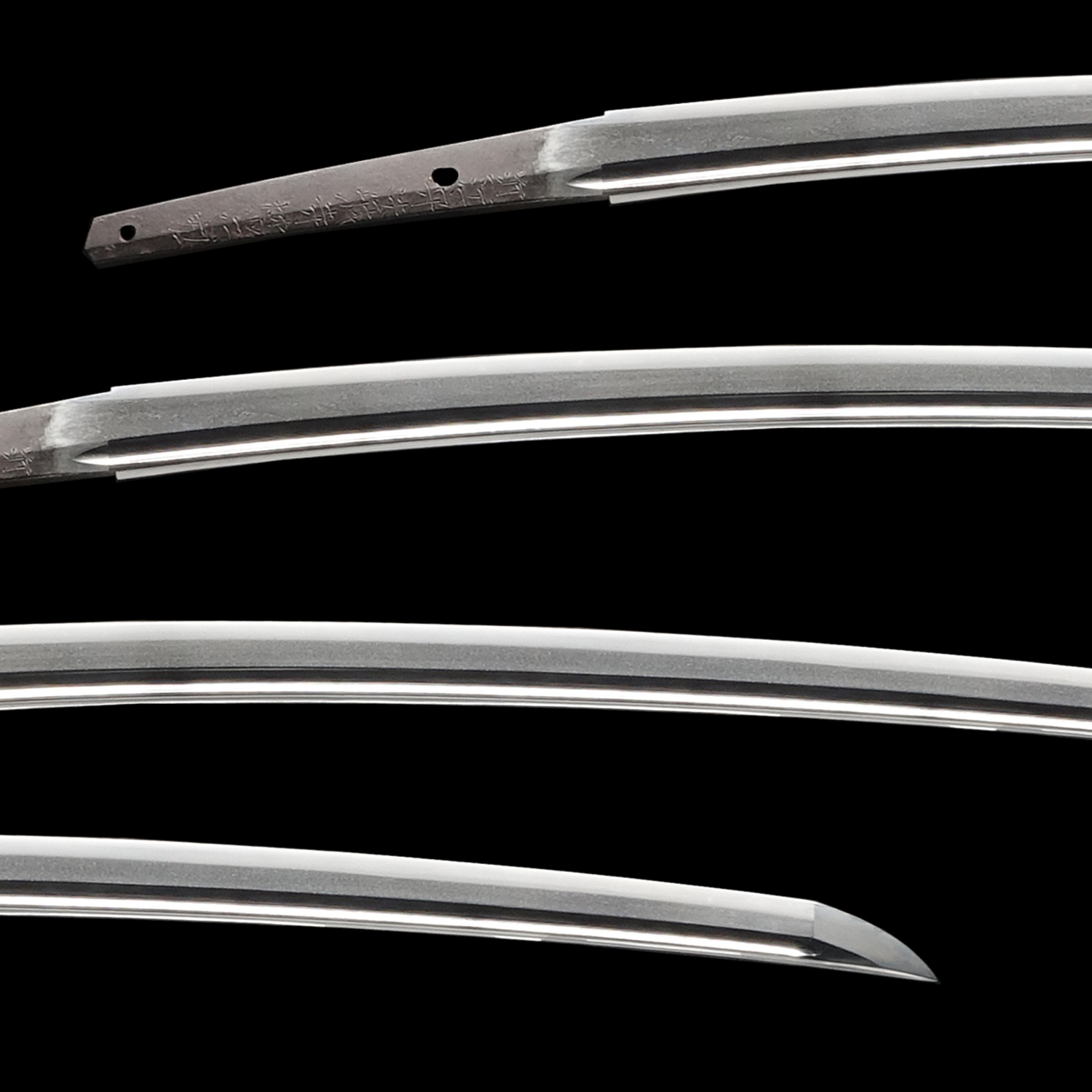
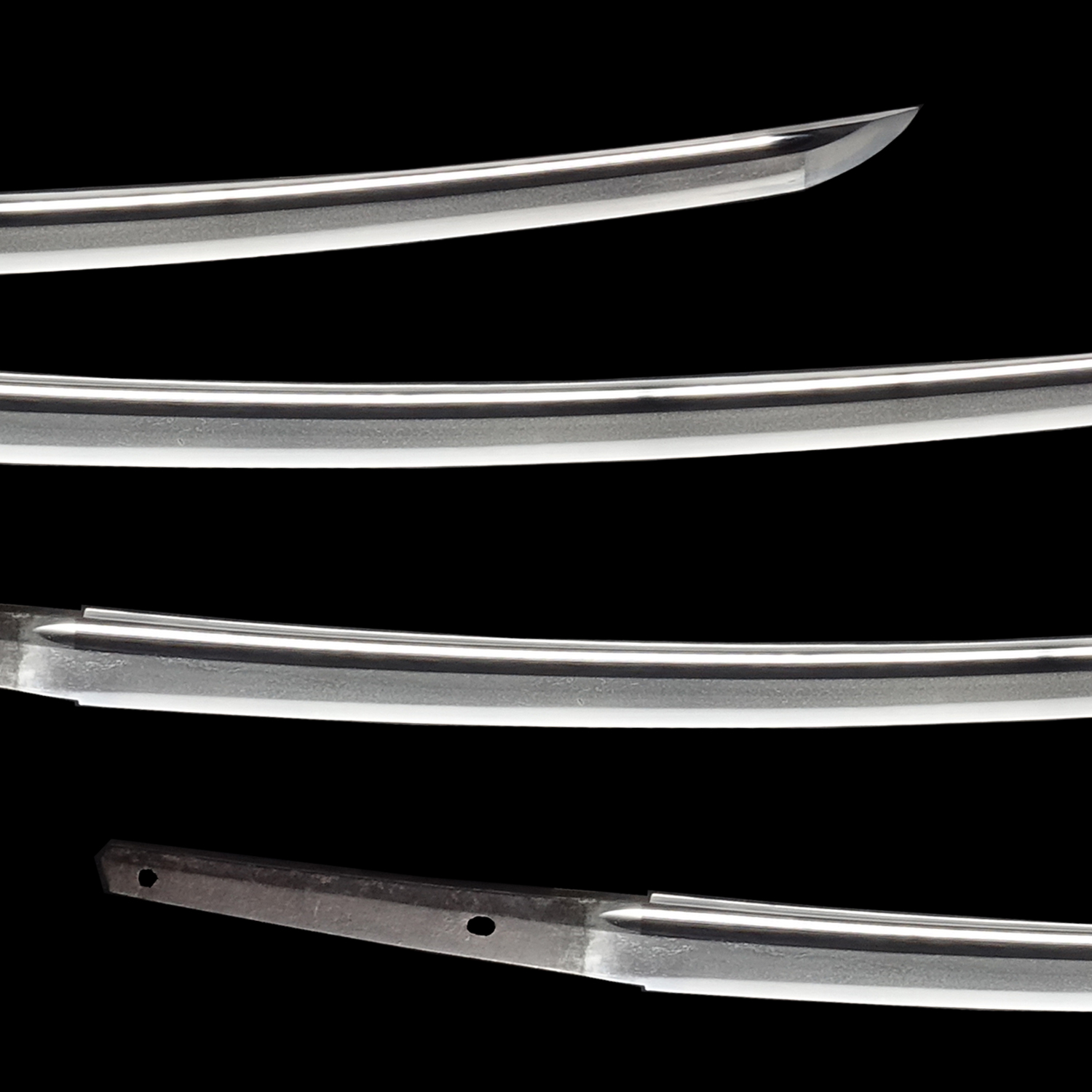
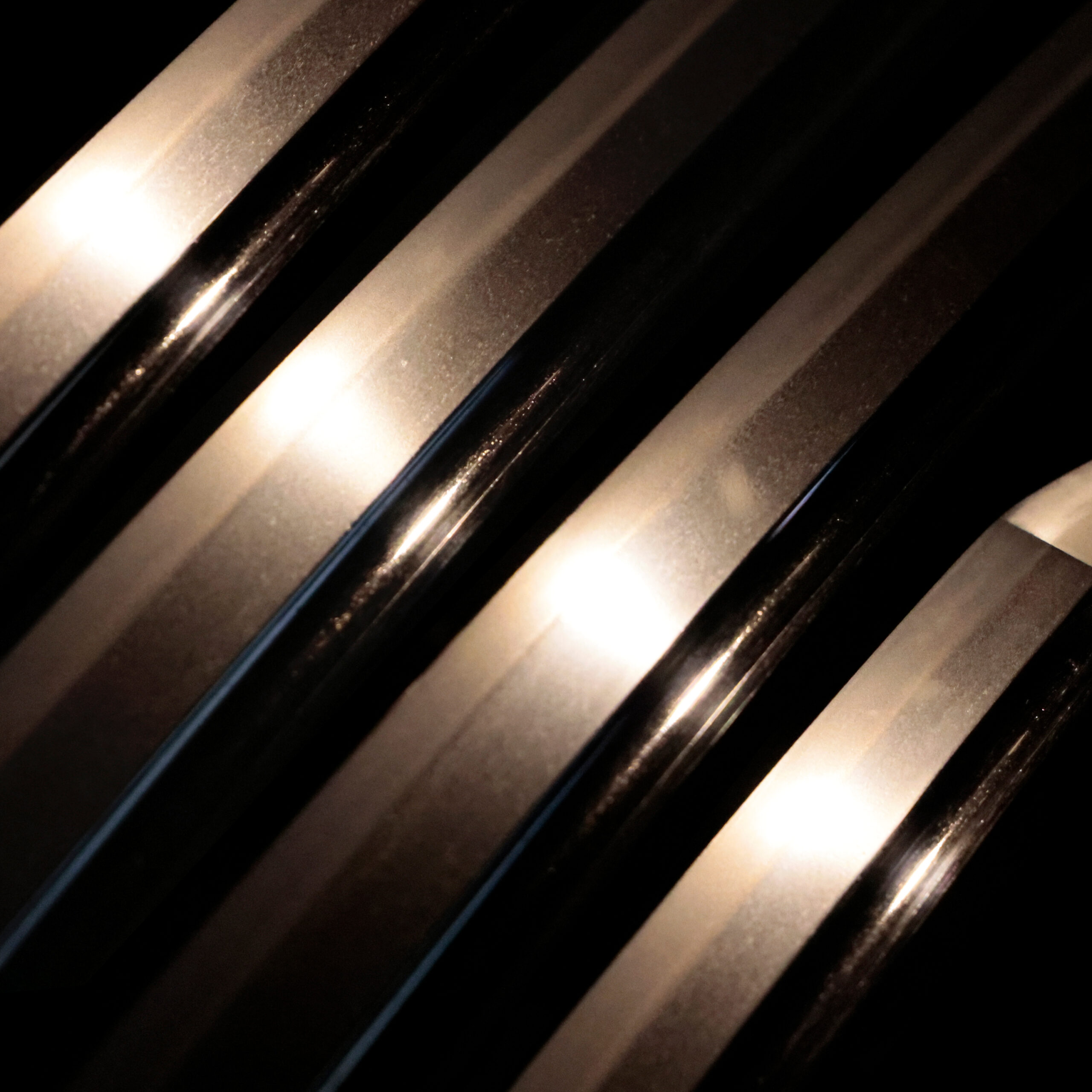
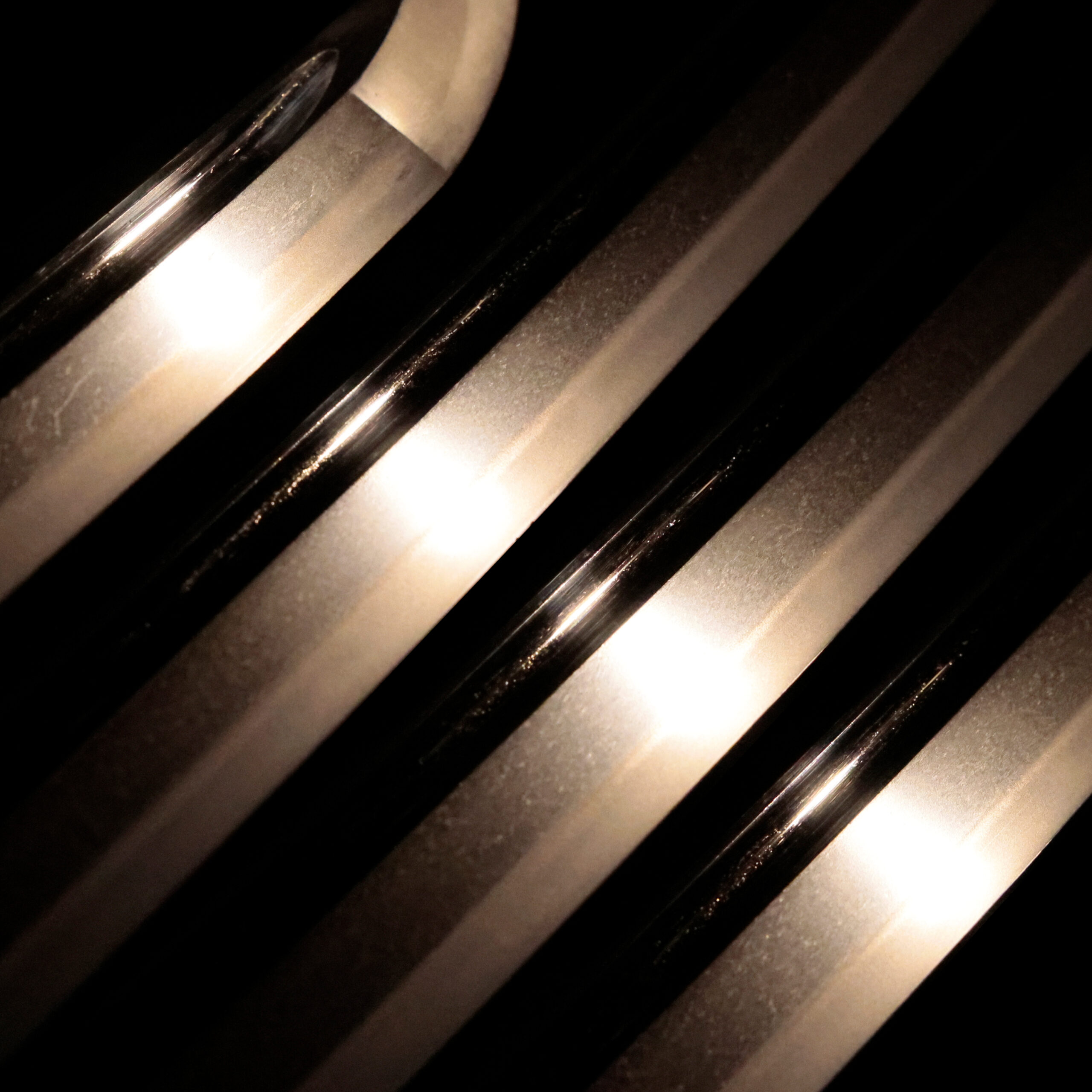
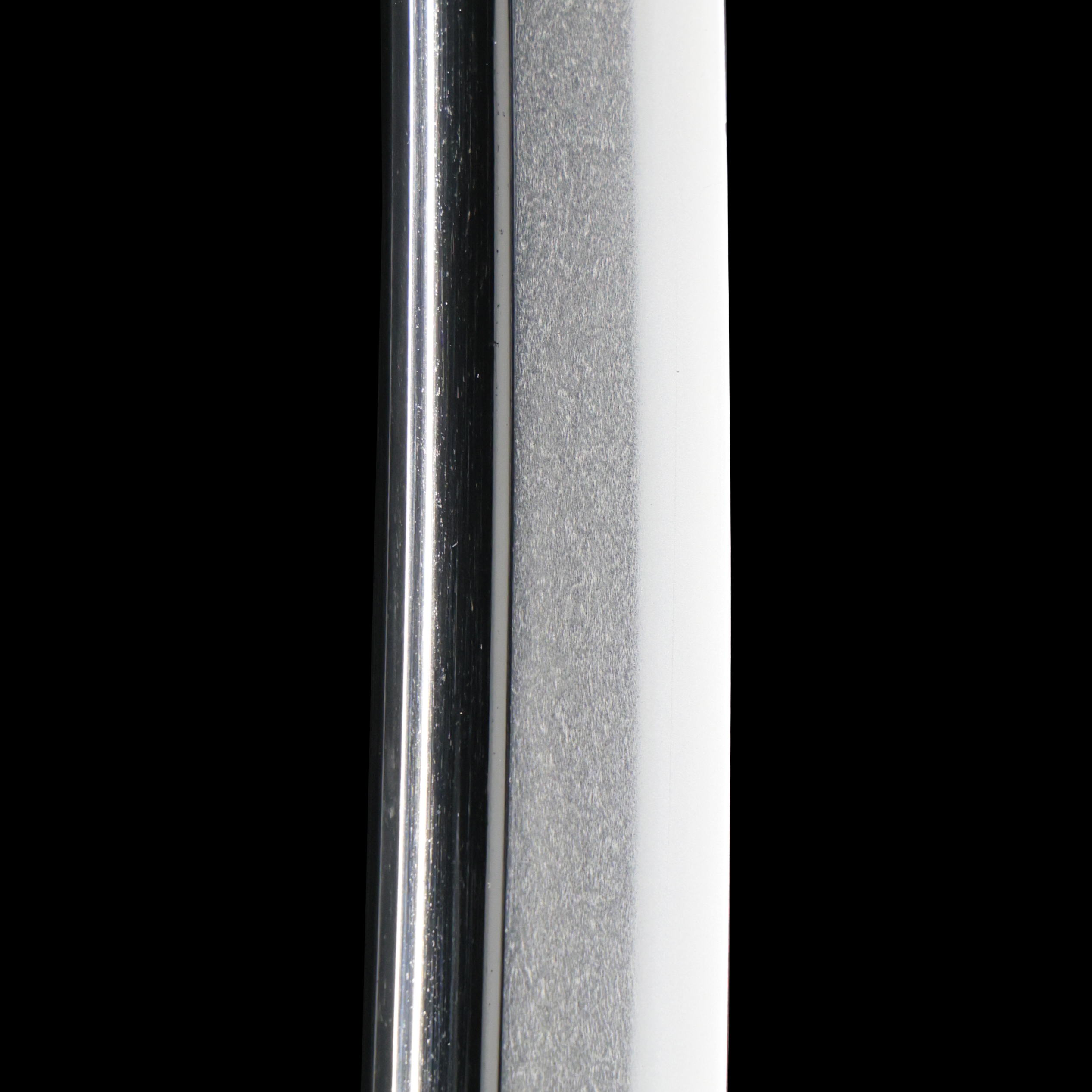
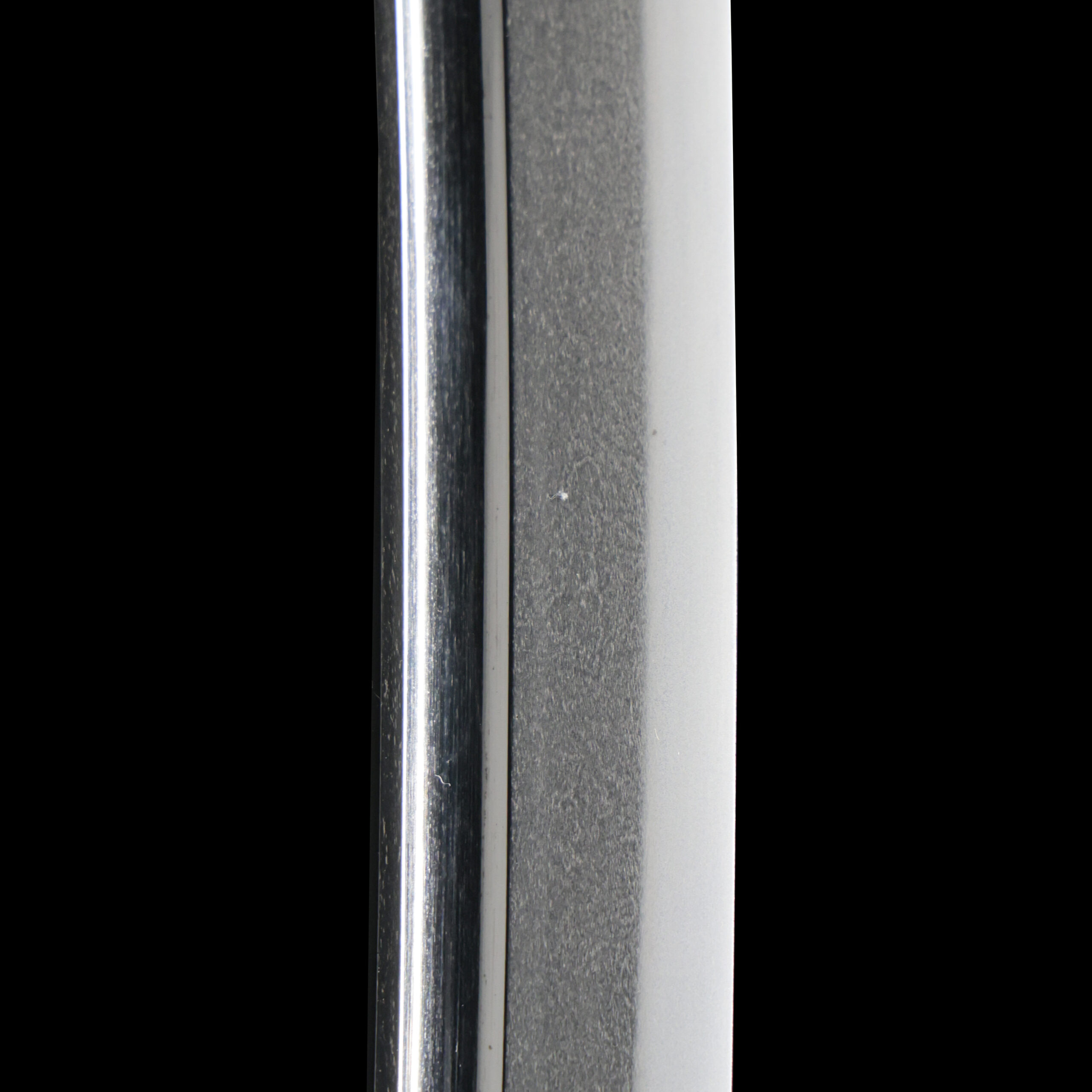
Kissaki:Kissaki is the tip of the Japanese sword.
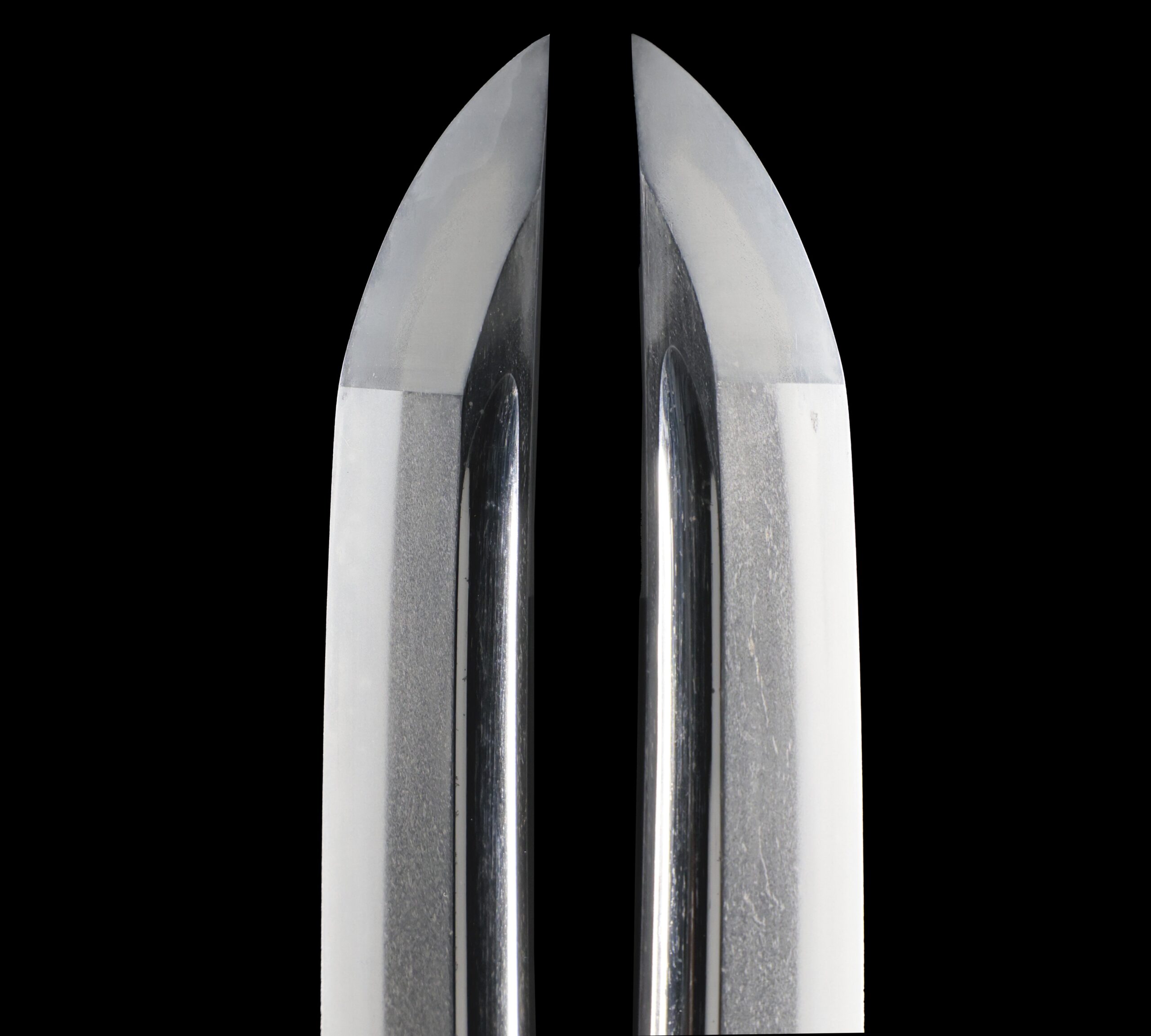
Nakago:Nakago is the tang of the Japanese sword.
Japanese swordsmiths left the black rust on the tang because it prevents red rust while the tang is in its handle. And the discoloration of the tang was created over time, and it is a great indicator for a Japanese sword specialist to estimate when the sword was forged.
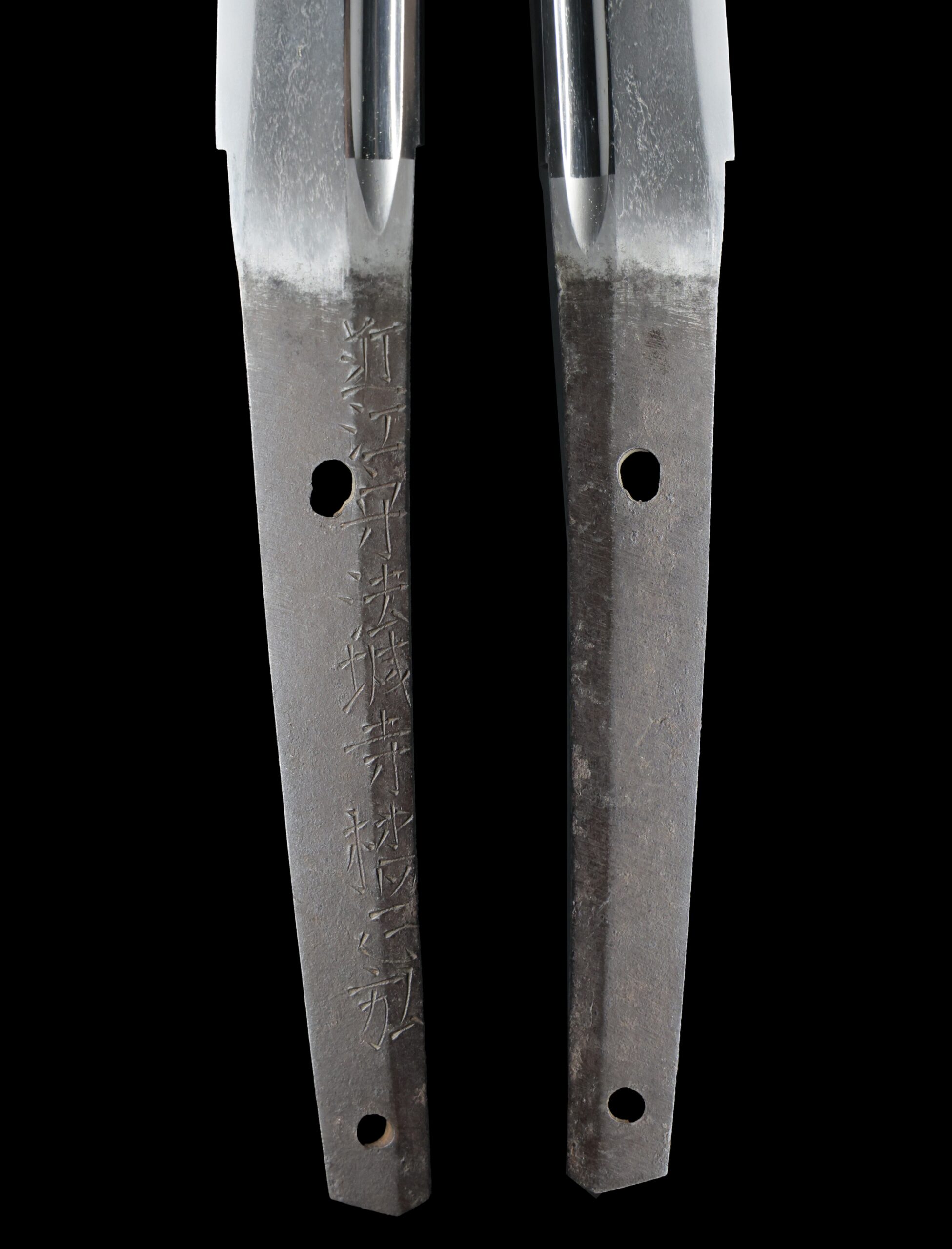
Koshirae:Koshirae is the mounting of the Japanese sword. There are several parts that consist of Koshirae such as Saya (Scabbard), Tsuka (Handle), Tsuba (Handguard).
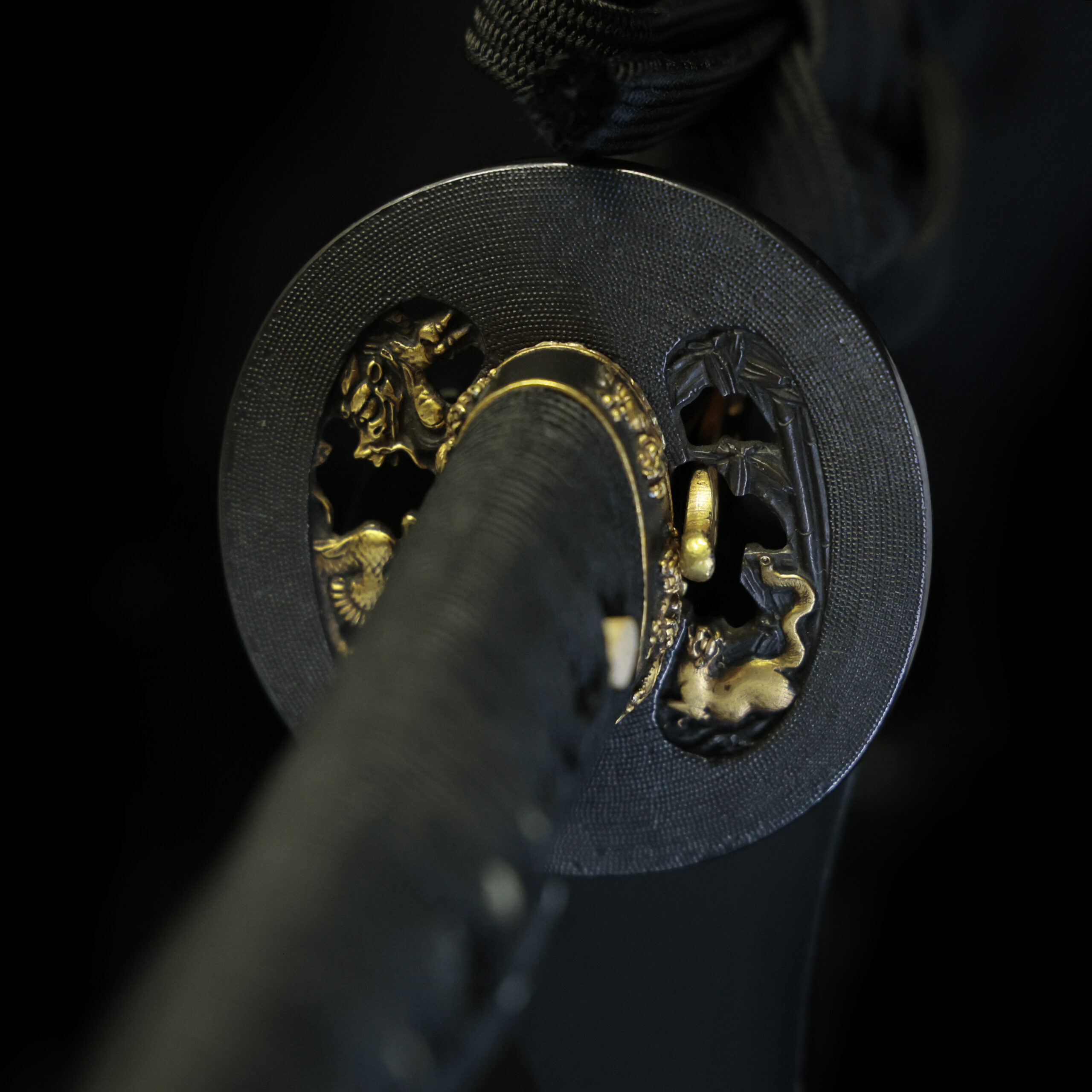
Fuchi-Kashira:A pair of matching sword fittings that cover the upper and bottom parts of its sword hilt.
The pattern designed on this Fuchi-Kashira is called Shishi Botan (獅子牡丹), which is a combination of Karajishi (唐獅子, lion) and Botan (牡丹, peony). While lions have been known as the “king of beasts”, peonies have also been called the “king of flowers.” Therefore, this combination motif has been favored since ancient times.
The Shishi (獅子) means a lion in Japanese, and the Karajishi is a lion brought from the continent to Japan in the Toh period (唐, Tang dynasty, 618-907). The Karajishi typically has curly hair for its head, neck, body, and tail, as seen on this work. In Buddhism, the Karajishi is regarded as a symbol of wisdom, and Monju Bosatu (文殊菩薩, Manjushri Bodhisattva) rides lions. According to a theory, the Karajishi is the origin of Komainu (狛犬, stone guardian dogs that exorcize evil spirits). It shows this animal motif has been familiar to Japanese people since ancient times.
There is a Houwa (法話, Buddhist monks tell the story of Buddhism in an easy-to-understand manner) that treats the Karajishi and this flower. The lion is called the king of the beasts. However, even this invincible animal has only one fear: a bug in the lion’s body. This pest grows in the lion’s hair and eventually breaks the skin and bites the flesh. Nevertheless, it dies if it is exposed to the night dew of a peony. Therefore, the lion rests under peony flowers at night, looking for a haven. The design of these sword mountings might have been quoted from this story.
Peony represents happiness, wealth, nobleness, and gorgeousness. This flower pattern has been treated as a kind of good-omen motif; people regarded it as a rich harvest sign. Peony is called “Botan” in Japanese. When we write this flower’s name in Japanese, its second letter means mountain hermit medicine that would give us eternal youth. Based on the meaning of this letter, the peony pattern symbolizes eternal youth and longevity.
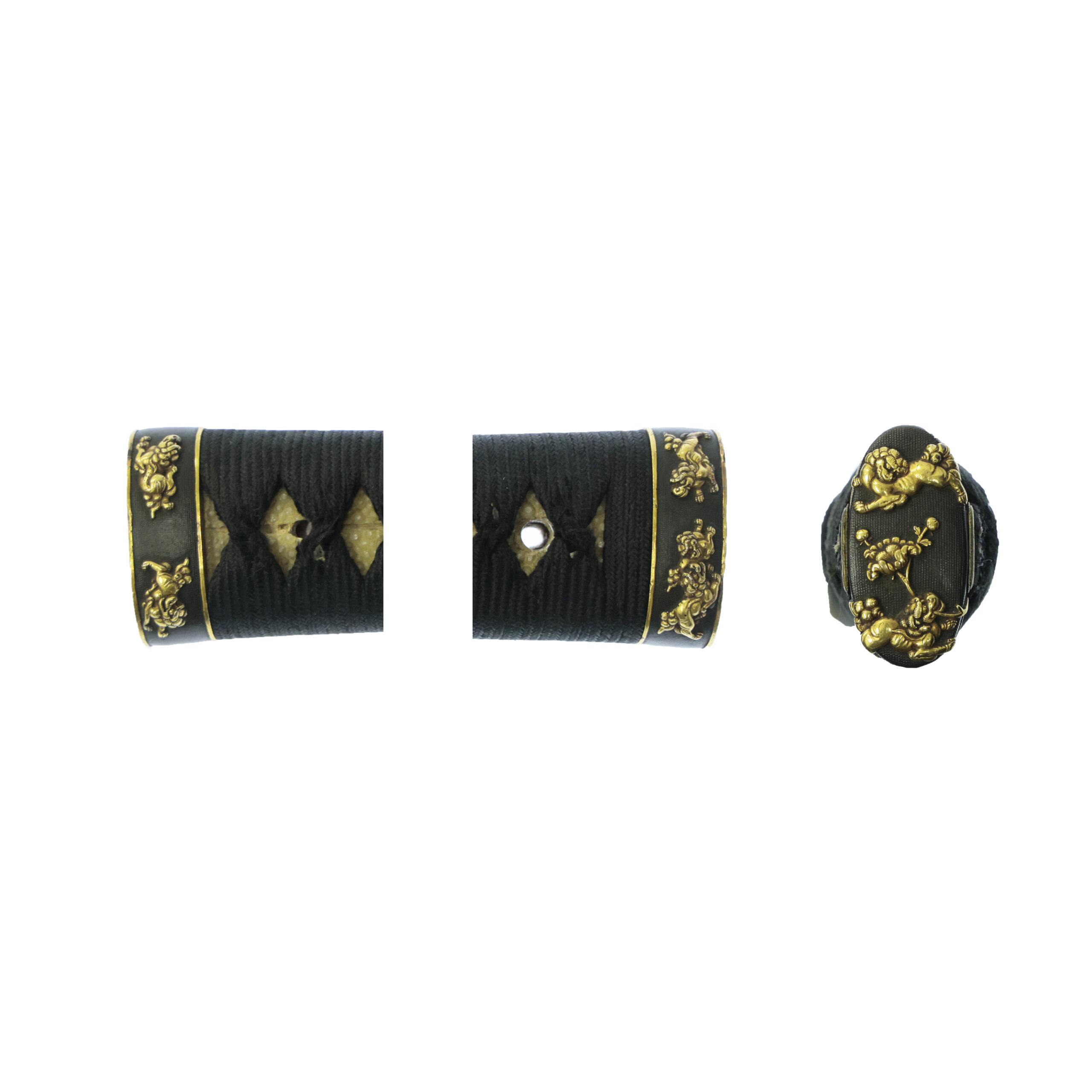
Tsuka and Menuki:Tsuka is the handle of the Japanese sword and Menuki is its decoration.
The Menuki (目貫) feature a depiction of peonies (牡丹, botan), the same motif that also appears on the fuchi-kashira (縁頭). The peony, often called the “king of flowers,” has long been admired in Japan as a symbol of wealth, honor, and prosperity.
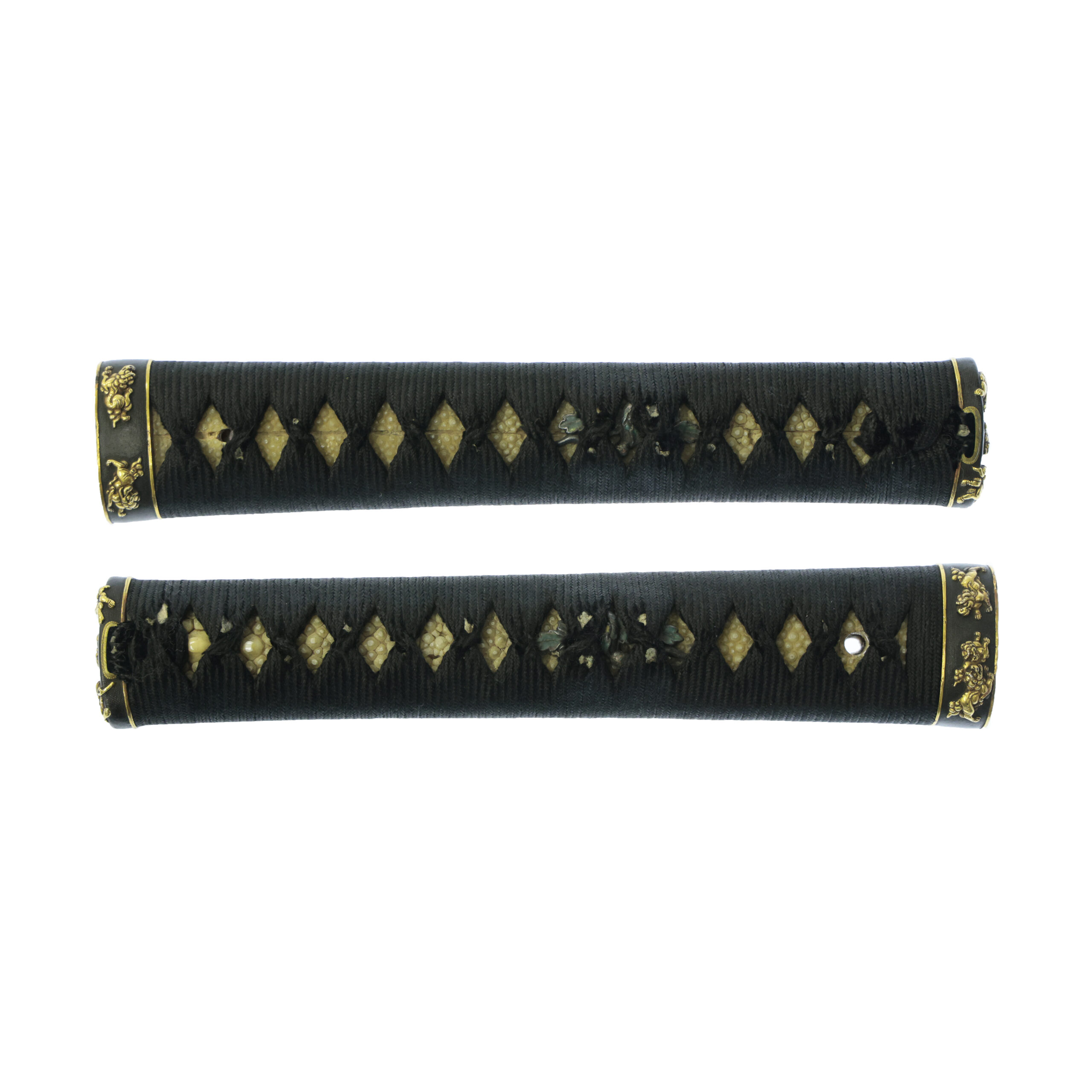
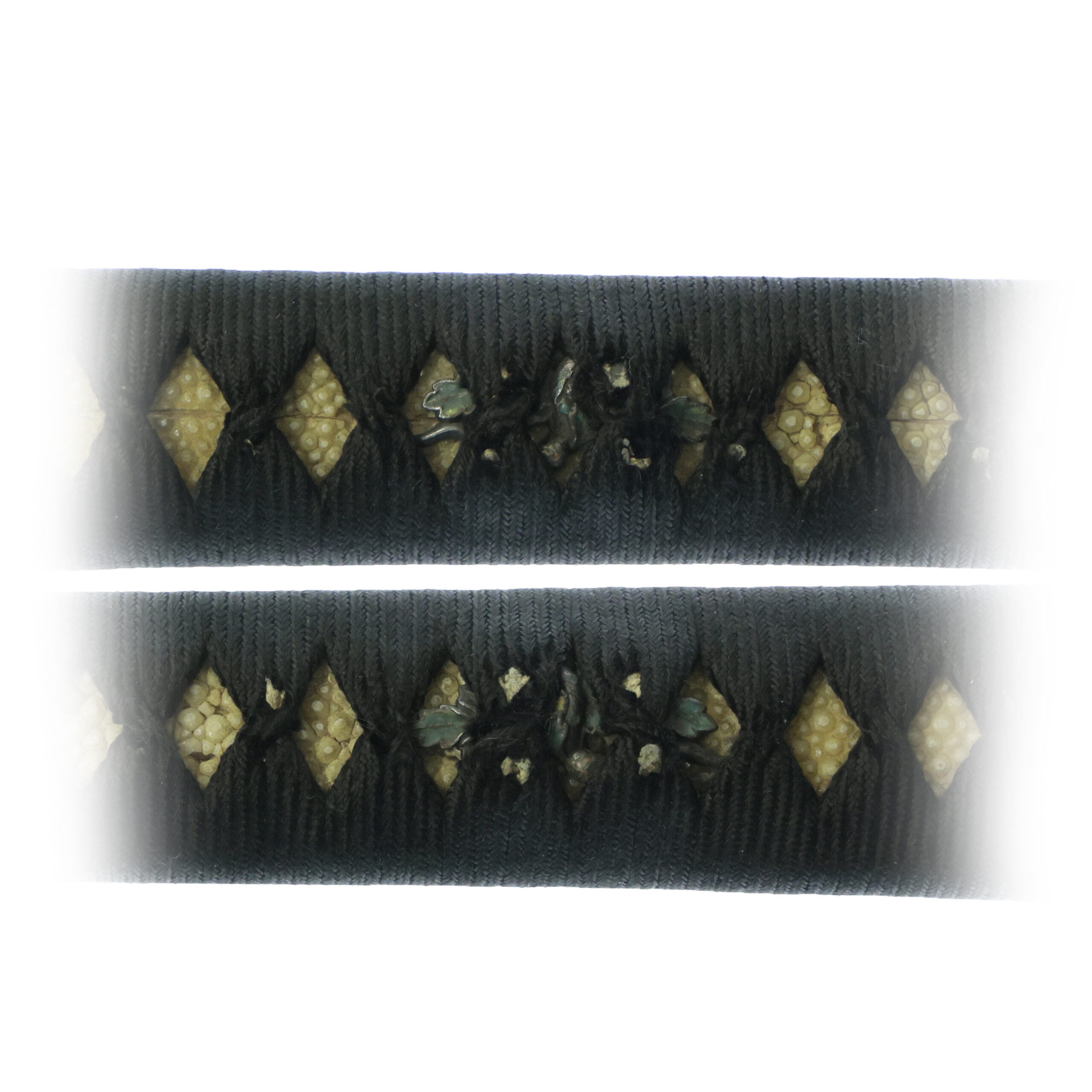
Tsuba and Habaki:Tsuba is the handguard for the Japanese Sword and Habaki is the equipment to make the blade not touch its scabbard inside. It prevents the blade from getting rusty and chipped.
This Tsuba showcases exquisite sukashi-bori (透かし彫り, openwork carving) along with finely detailed horimono (彫り物, engraved designs) and elegant gold inlay on both sides. The ground is decorated in nanako-ji (魚々子地), a meticulous technique that creates a surface resembling tiny fish eggs, adding a refined texture and highlighting the skill of the artisan.
The design depicts a dragon and a tiger, known as Ryūko-zu (龍虎図). In Japanese culture, the dragon and tiger are often paired as symbolic opposites, representing balance and harmony. The dragon signifies power, wisdom, and the heavens, while the tiger embodies strength, courage, and the earthly realm. Their dynamic coexistence reflects the philosophical concept of yin and yang, in which opposing forces complement one another.
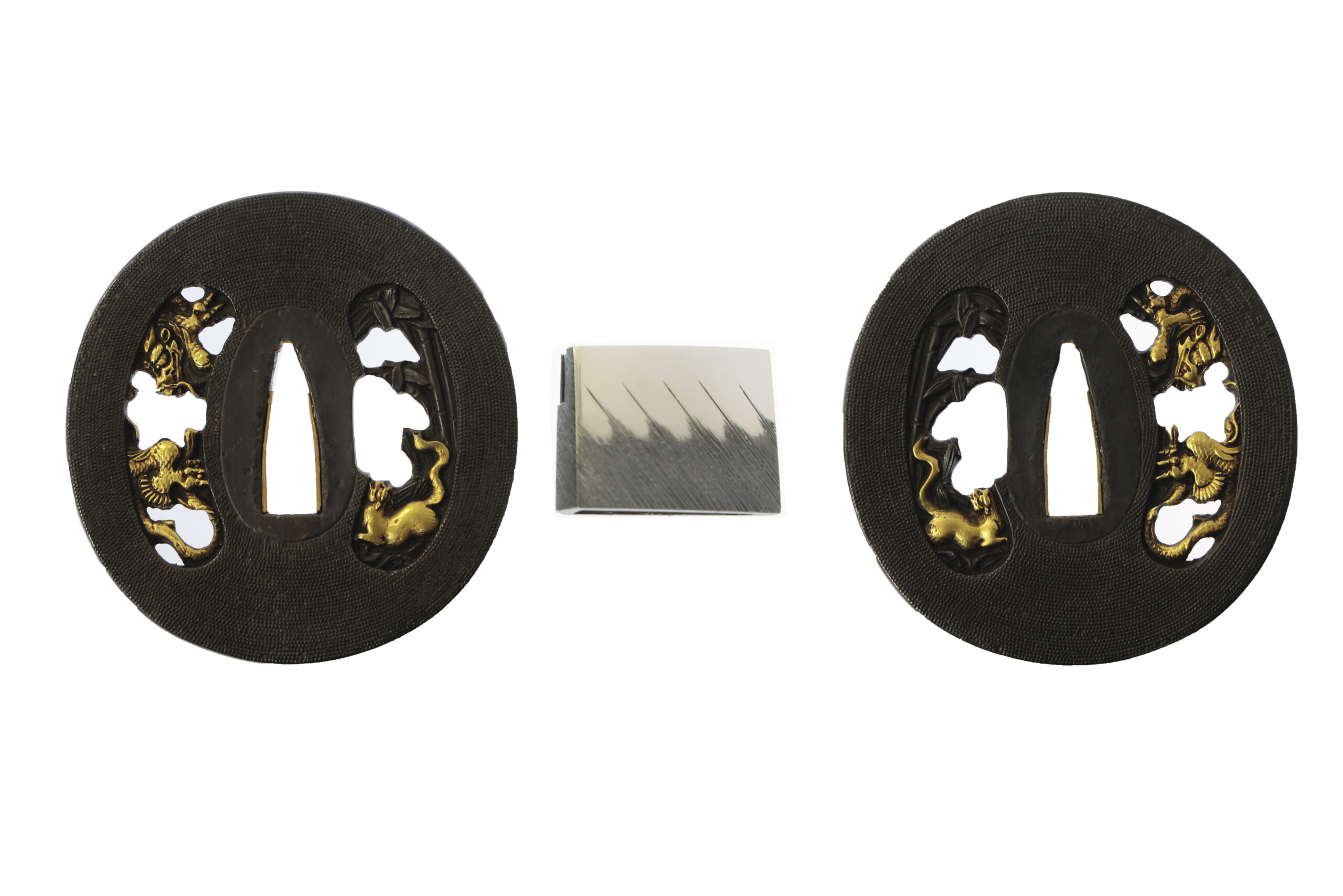
Kougai:Kougai is the equipment for Samurai to arrange or fix his hair style.
This item is an antique Kougai (笄), which was used to arrange or fix the hairstyle of Samurai. The Kougai is usually stored in the Kougai Hitsu. The Kozuka (小柄) is often stored at the other side of the scabbard.
This Kougai is adorned with a magnificently rendered shishi (獅子, mythical lion-dog), the same motif that also appears on the fuchi-kashira (縁頭). The lion is depicted in takabori kinzogan (高彫金色絵, high-relief carving with gold inlay), showcasing remarkable craftsmanship and a powerful sense of life and movement.
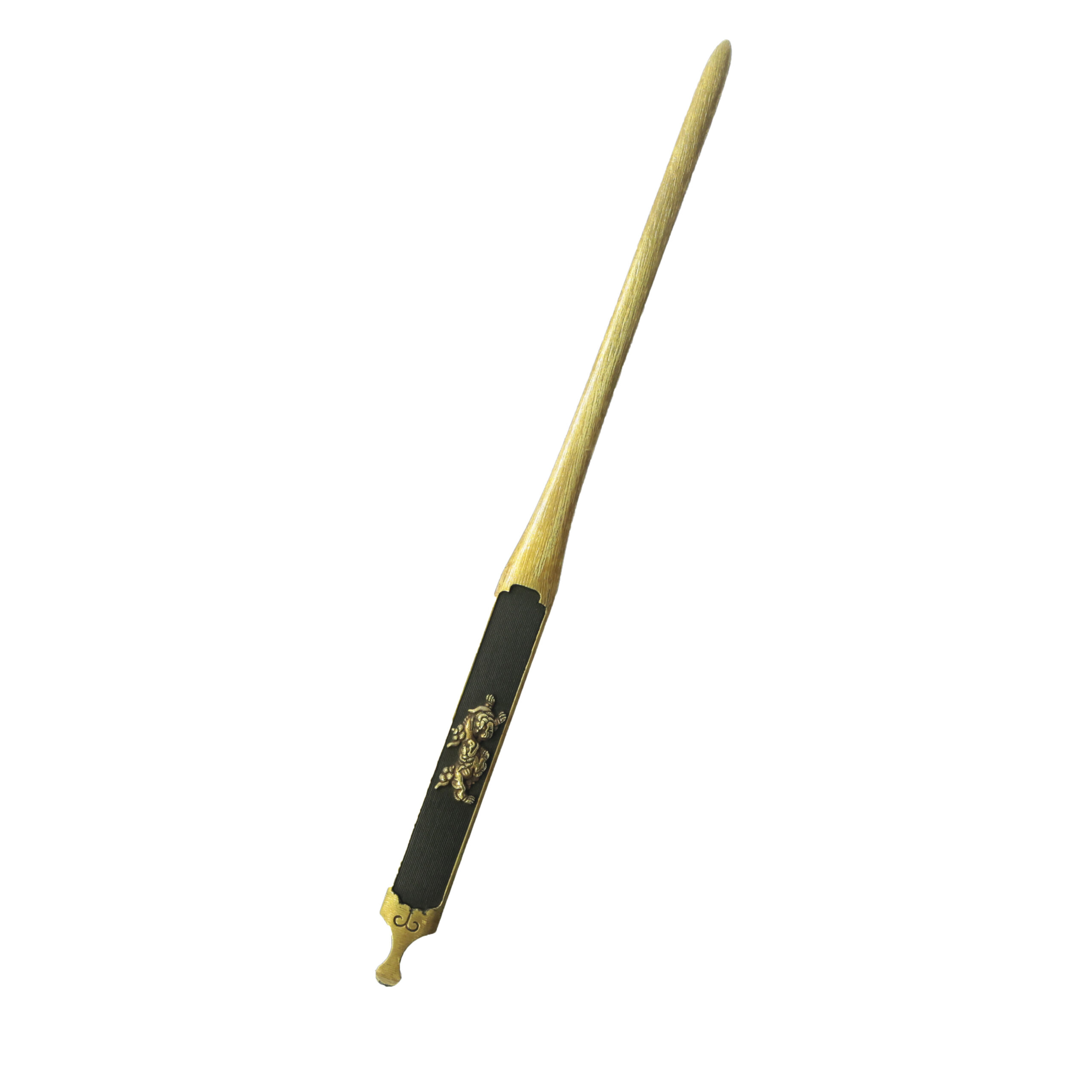
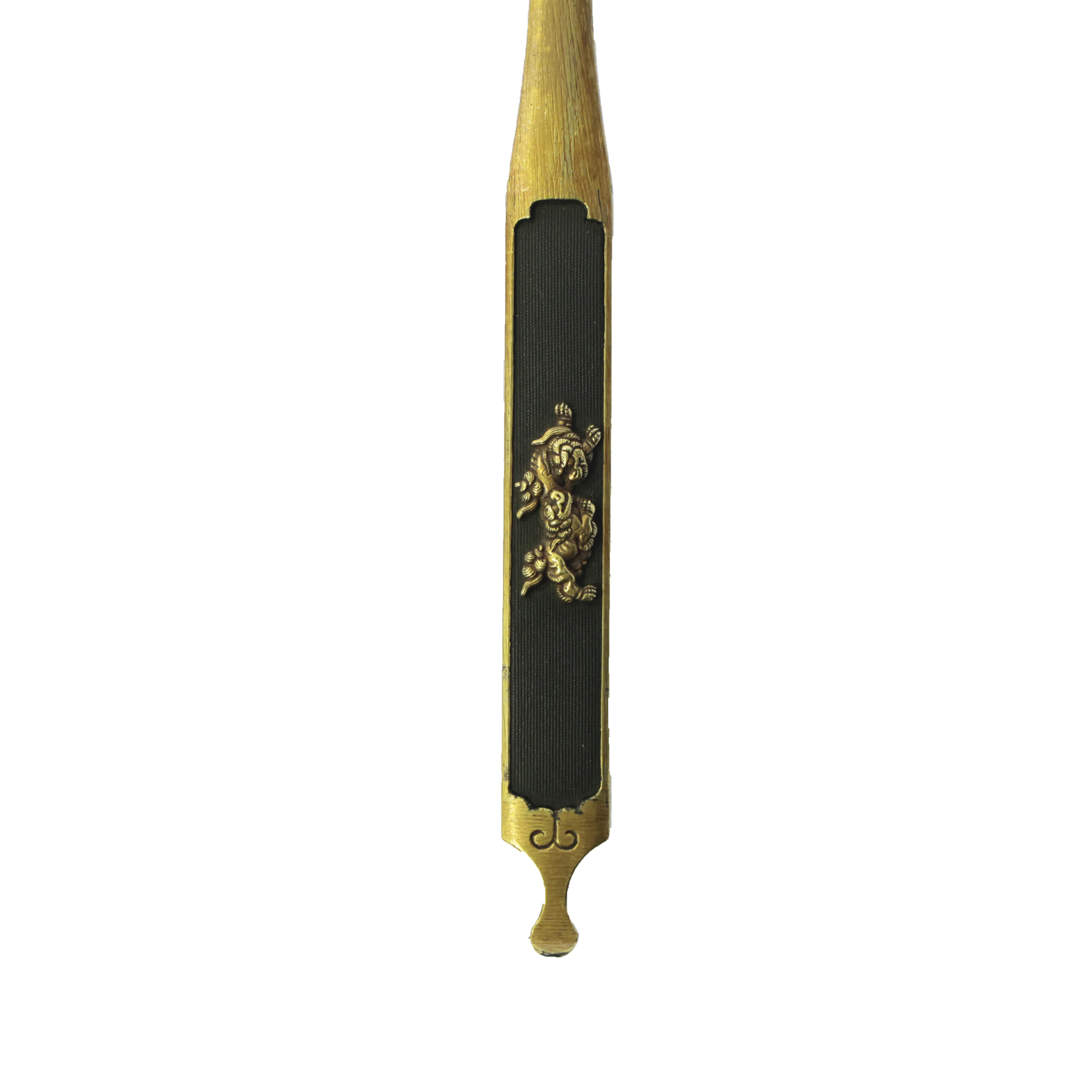
Saya:Saya is the scabbard for the Japanese sword.
The scabbard is finished in black Roiro-nuri (黒蝋色塗). Roiro is a highly sophisticated lacquering technique, carried out by specialized craftsmen known as Roiro-shi (蝋色師), who carefully polish the surface using high-quality Japanese Roiro lacquer. This method is regarded as one of the finest and most prestigious finishes in traditional Japanese lacquerwork.
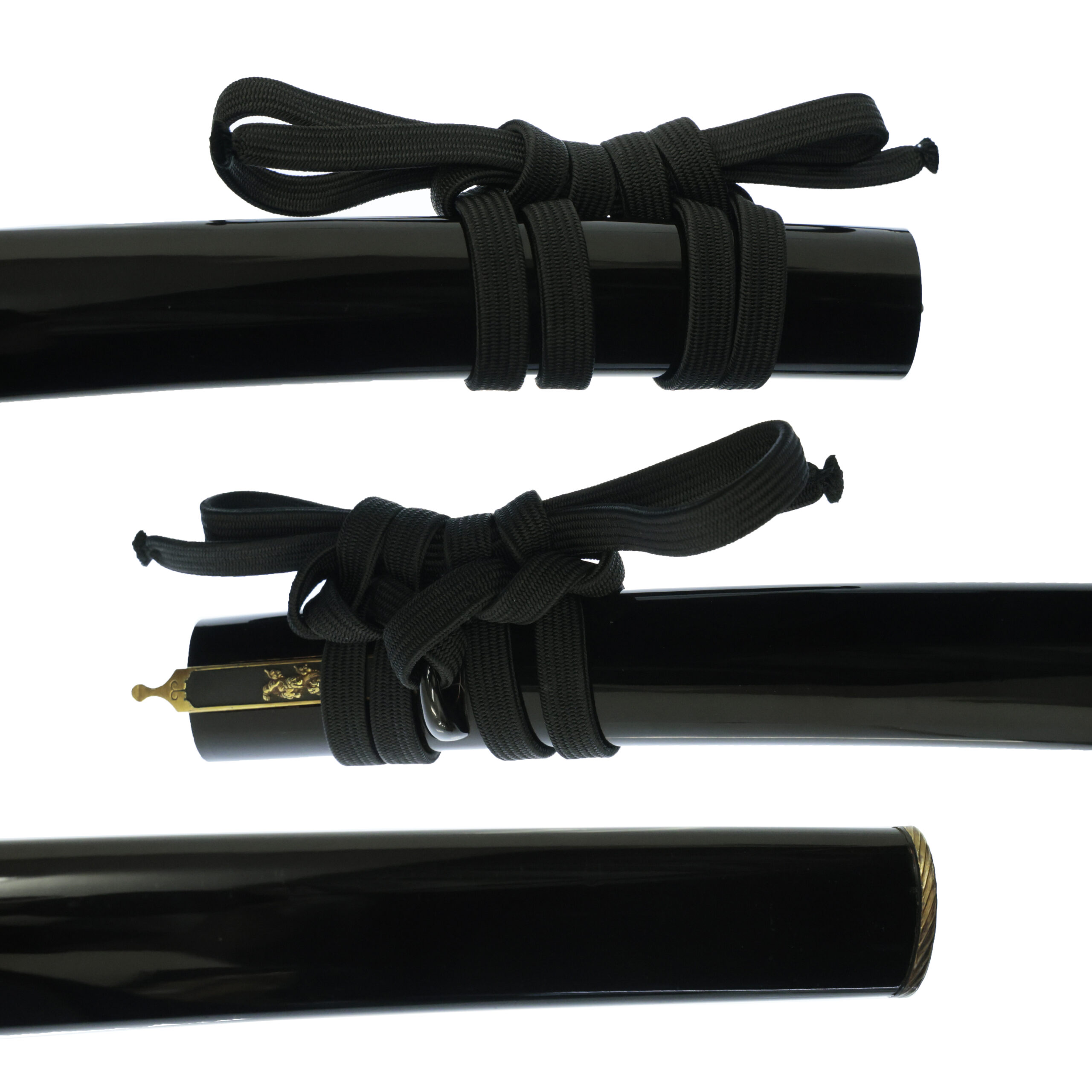
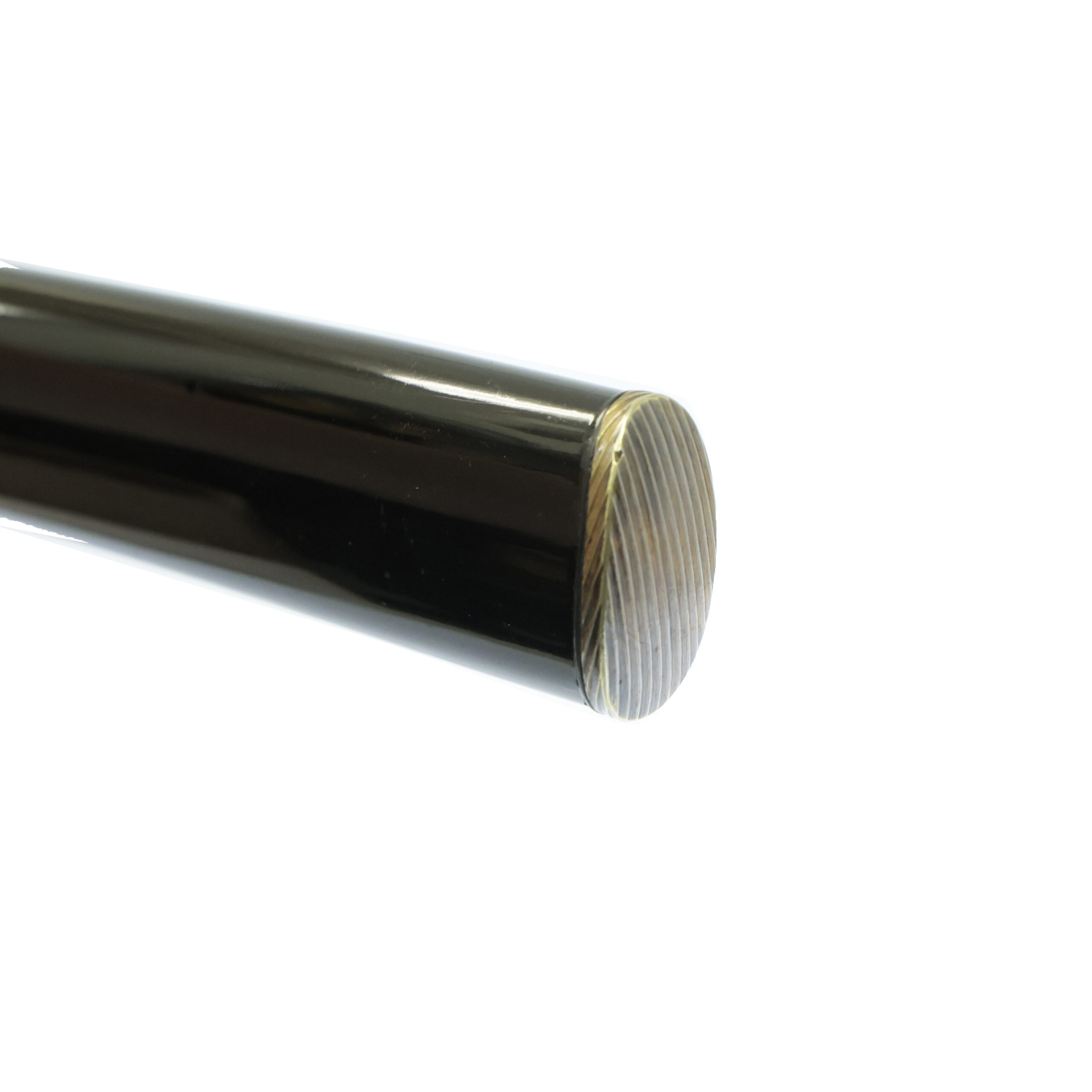
Authentication Paper:NBTHK TOKUBETSU Hozon Certificate for the blade (No. 120644) & Hozon Certicate for the Koshirae (No. 421580)
NBTHK, also known as Nihon Bijutsu Touken Hozon Kyokai (the Society for the Preservation of the Japan Art Sword), is one of the oldest Japanese sword appraising organizations in modern-day Japan. They authenticated the blade on October 3rd in the 1st year of Heisei (1989) and the koshirae on October 6th in the 1st year of Heisei (1989) . They appraised them as Tokubetsu Hozon Touken and Hozon Tousogu, the blade especially worth preserving for Japanese society. The purchaser will receive this original certificate as well. We can also translate what is written into English and make a PDF file for your record if you request.
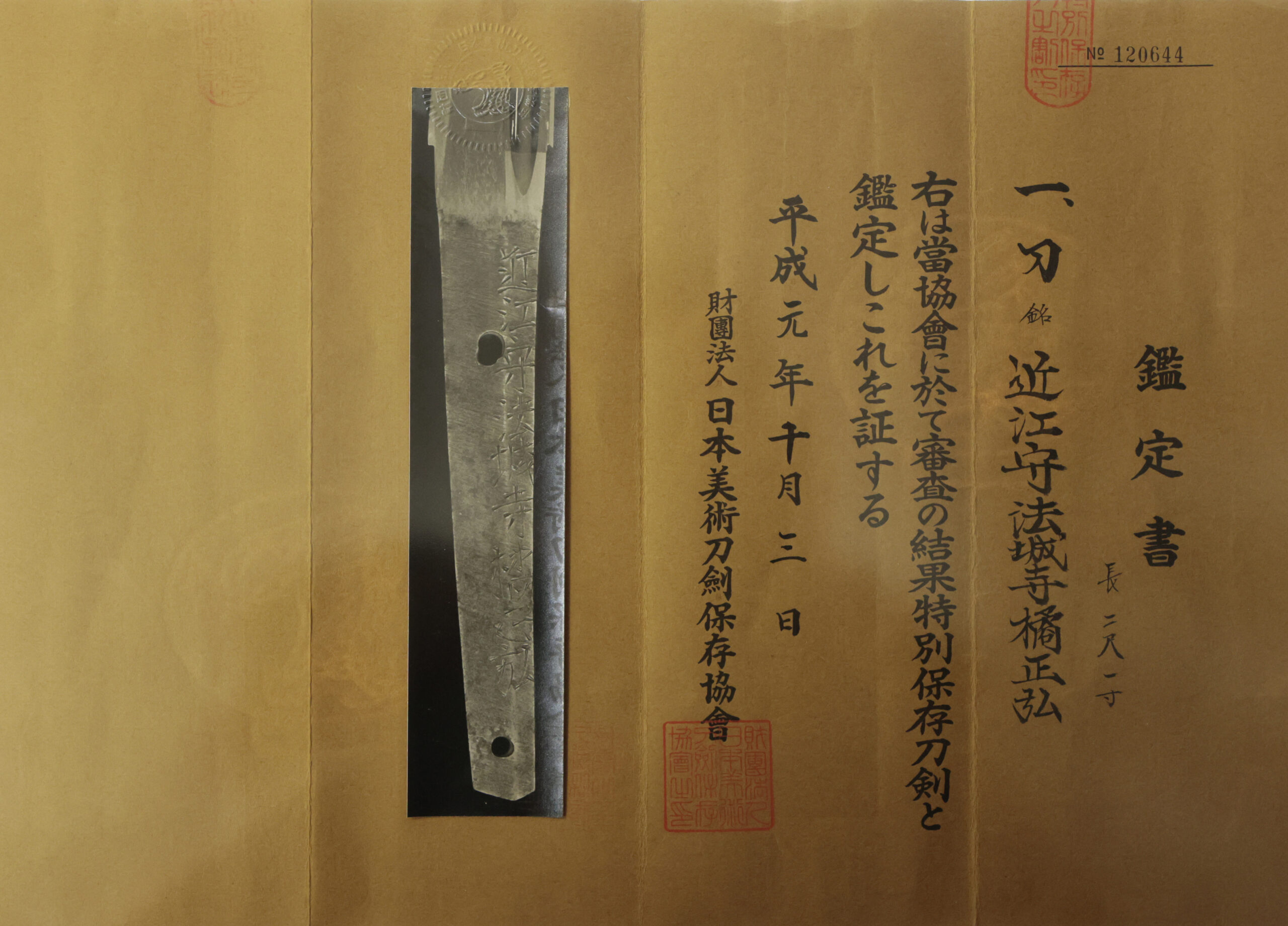
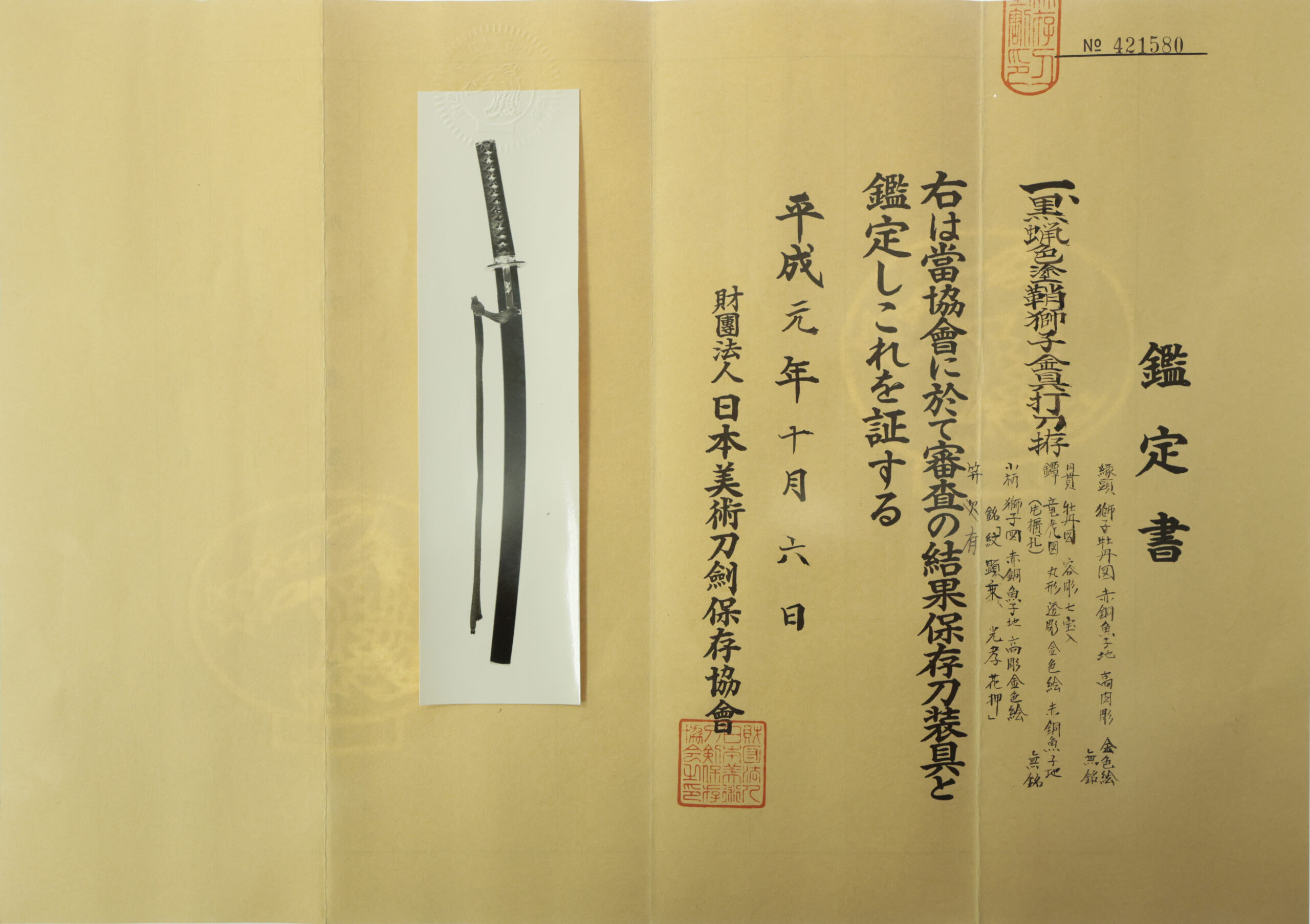
Registration Number : Gifu 63765
The Board of Education in Gifu predecture issued a registration paper for this sword. It is called Jyu Hou Token Rui Tourokusho (銃砲刀剣類登録証). Bunkacho (The Agency for Cultural Affairs) acknowledges a Japanese sword with this paper as a work of art.
The sword needs to be traditionally hand-forged and made of Tamahagane carbon steel to be registered in the system. With this paper, its owner in Japan can legally own an authentic Japanese sword. Based on this registration number, we will apply for its export permit.
This paper will need to be returned to the board of education when the sword is being shipped abroad, but you can receive a copy of it. An English translation of this registration paper is available on request.
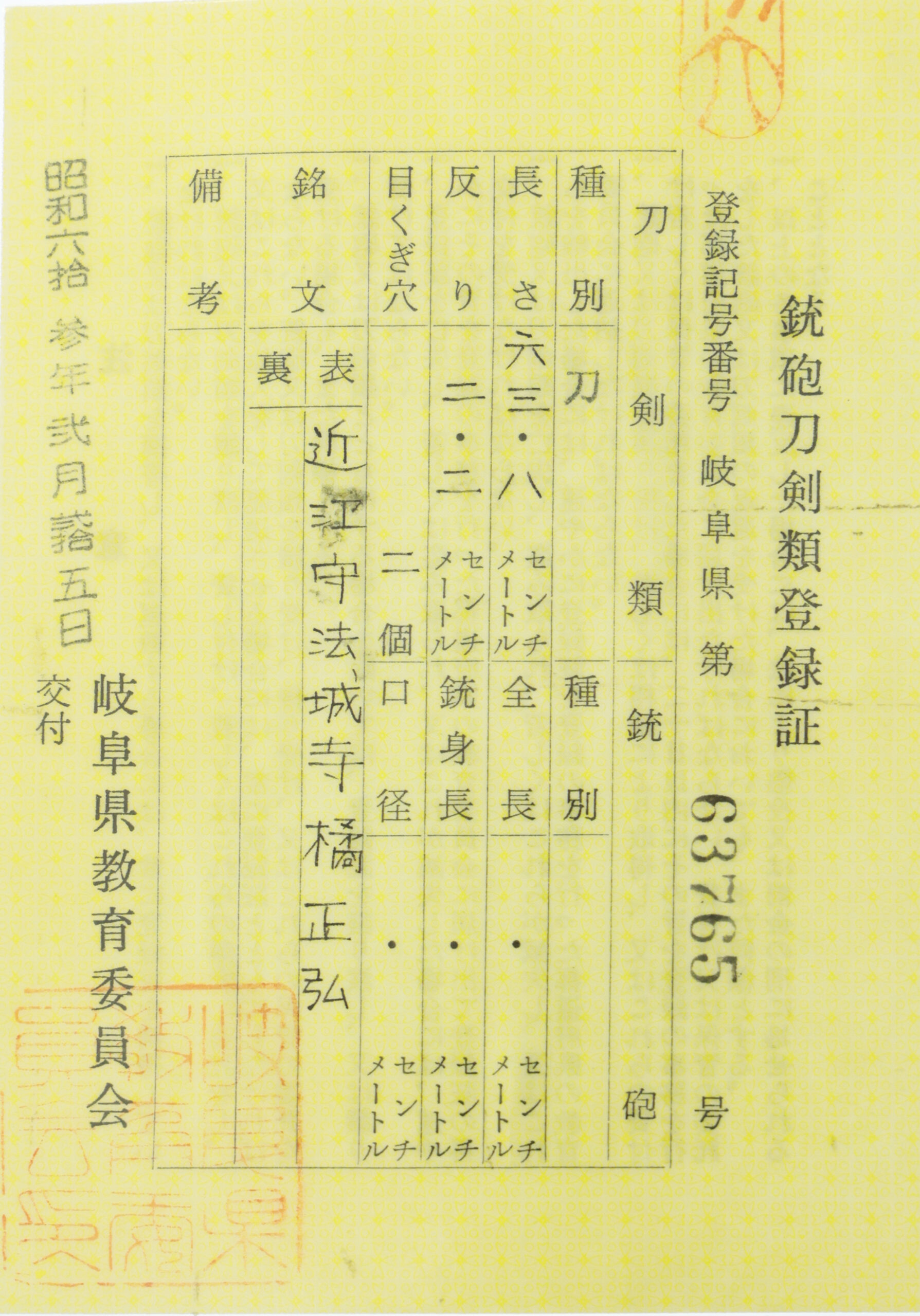
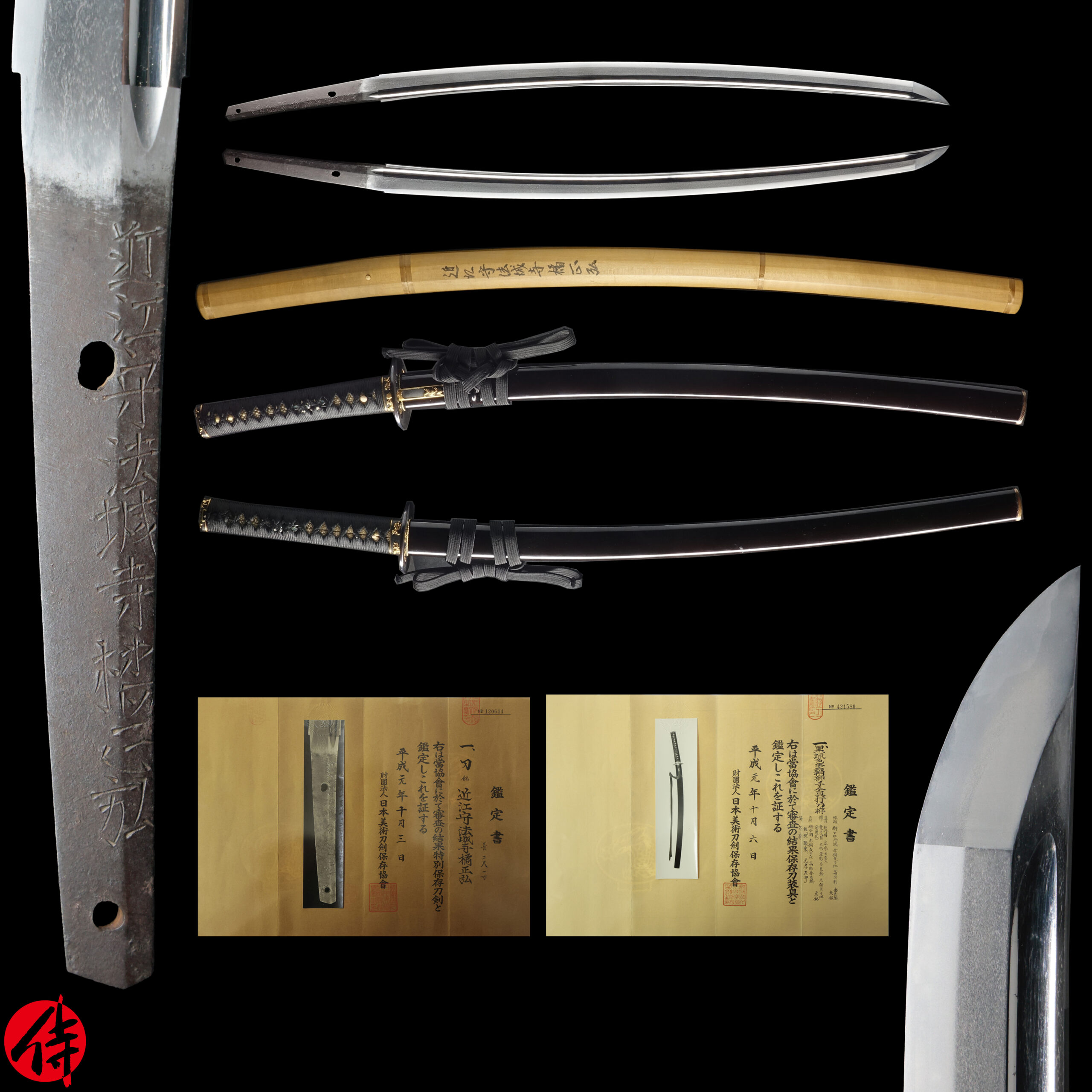
—————————————————————–
【About us】
Samurai Museum is located in Tokyo, Japan, exhibiting antique artifacts related to the Samurai history. Samurai Museum Shop is the place for those who are interested in Japanese culture and craftsmanship. We deal with antique Samurai swords/armor, traditional crafts made in Japan and so on.
【Japanese Sword& Export Process】
The Japanese swords we deal with are hand-forged edged swords made in Japan. It was made from the traditional carbon steel called TAMAHAGANE(玉鋼). Samurai Museum is familiar with the proper legal procedure for an antique/ authentic Japanese sword to be exported from Japan. We have sent more than 1000 Japanese swords for the past few years (~2025) to amazing owners who appreciate its historical value.
Each Japanese sword is registered under the Agency for Cultural Affairs and the Board of Education in Japan. They issue a registration paper for each Japanese sword for its owner in Japan to legally possess it. The Japanese sword with its registration paper means it was traditionally hand-forged in Japan.
To legally export the sword from Japan to other countries, we will have to apply for its permit to the Agency for Cultural Affairs(Bunkacho) and return the original registration paper to the Board of Education. It normally takes around 2-4 weeks to receive this permit after submitting required documents. And we would like you to expect at least 1-1.5 months for your order to arrive at your given address after you ordered. For more detailed info, please click here.
It is allowed for residents in Japan to own authentic Japanese swords without a special license as long as they come with registration papers. Please feel free to contact us if you are a resident of Japan, whether temporarily or permanently. We will also assist you when you leave Japan and need to obtain the export permit.
【Payment Method】
We accept payment through Stripe (Credit card), PayPal, Apple Pay or ChromePay, all of which are secure payment methods. Also, you don’t need to make an account on Stripe for the checkout. If you prefer other payment method, please contact us. After confirming your payment, we will apply for an export permit. You may either pay in JPY, USD, AUD, CAD,EUR CHF or GBP. The price is set in Japanese Yen. Prices in other currencies are automatically calculated based on the latest exchange rate.

* If the amount is above 1 million JPY, Stripe or wire transfer will be the only options for payment.
【Shipping】
We have shipped authentic Japanese swords to the USA, Canada, Mexico, Germany , Belgium, France, Finland, UK,Hong Kong, Australia. If you don’t live in these countries and like to order, please contact us first before making a purchase. We offer Free International Shipping as long as we can send antique Japanese swords by EMS.
We normally ship by EMS(Express Mail Service) provided by Japan Post. We will send you a tracking number for your order as soon as we hand it to the post office. We will put 100 % insurance on the shipping document without any extra charge. Based on the total amount, there might be a duty tax or other fee for you to pay, depending on the countries. We use package cushioning to protect the item and put it in a PVC pipe, which is one of the most secure packages because of its durability.
It will normally takes 5-14 days for the item to arrive at your given address after we dispatch it. Time of delivery is estimated as accurately as possible by the carrier but does not take into account any delays beyond our control such as by inclement weather, post office holiday seasons.
* If you live in Australia and like to purchase an authentic Japanese sword, please click here to know the detail.
* If you live in the UK and like to purchase an authentic Japanese sword, please contact us first and click here to know the detail.

【Review】
Here is one of the reviews we received from a customer who purchased an authentic Japanese sword from us. For more reviews, please click here.
“My experience overall with the whole process was wonderful. I had many questions about the history and process to purchase these treasures. All my questions were answered very timely and complete. The staff is very knowledgeable and very well versed if any questions do arise.”
【How to make sure the condition】
Please keep in mind that what you are going to purchase is an antique item. We uploaded high resolution photos for you to check its condition thoroughly. If you like to see more photos with different angles, please feel free to contact us. We will be happy to send them to you so that you can make informed decision. It is essential for us to know that you are happy with your choice of a sword. and we are prepared to use the best of our ability to serve you.
【How To Contact Us】
Please contact us through email, Facebook Messenger or Live Chat if you have any questions. You can find each icon on the right side of the website. Please click one of them to reach us. We will reply to you within 1-2 business days.
【The Art of Nihonto (Japanese Sword)】
Samurai’s history is a profound, eloquent legacy of ancient Japanese warriors in which millions of people worldwide are being fascinated. If you like to find out the art of Nihonto, please click here.
【A Guide to Japanese Sword Maintenance】
After acquiring an genuine Japanese sword, it is also important to know how to take good care of it. Here is the special video for you. Mr. Paul Martin, Japanese sword expert, shows you how to give proper maintenance to your sword. By mastering how to clean the Japanese sword, its aesthetic beauty will last forever.
When you purchase a Japanese sword from us, you can get a Free Japanese sword maintenance kit. It comes with four tools(Choji Oil, Uchiko Whetstone Powder, Peg remover, Oil Applicator). By watching the video instruction above , you can enjoy learning how to maintain your Japanese sword while appreciating it. If you have any difficulty assembling the sword or cleaning the blade, you can feel free to contact us.
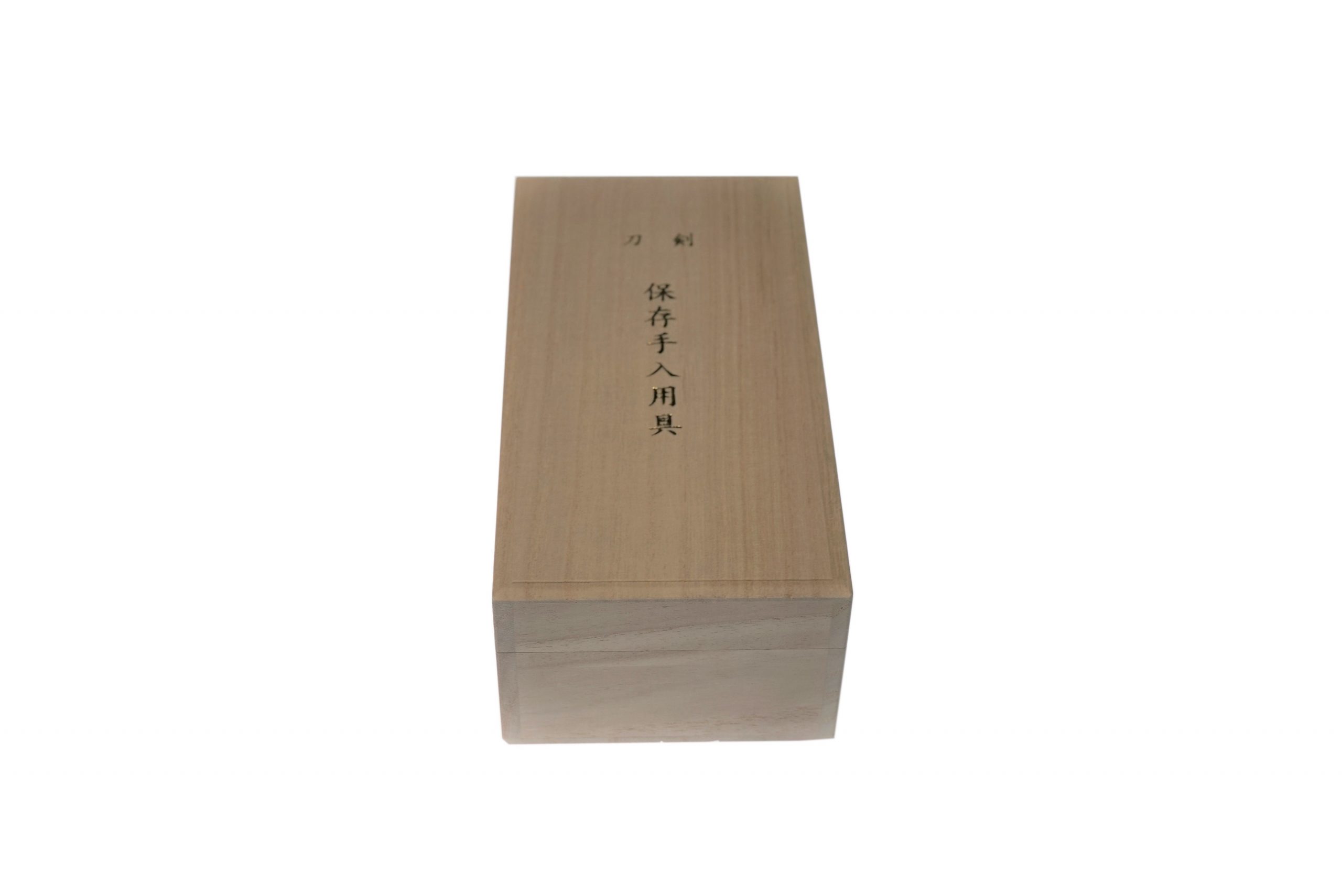
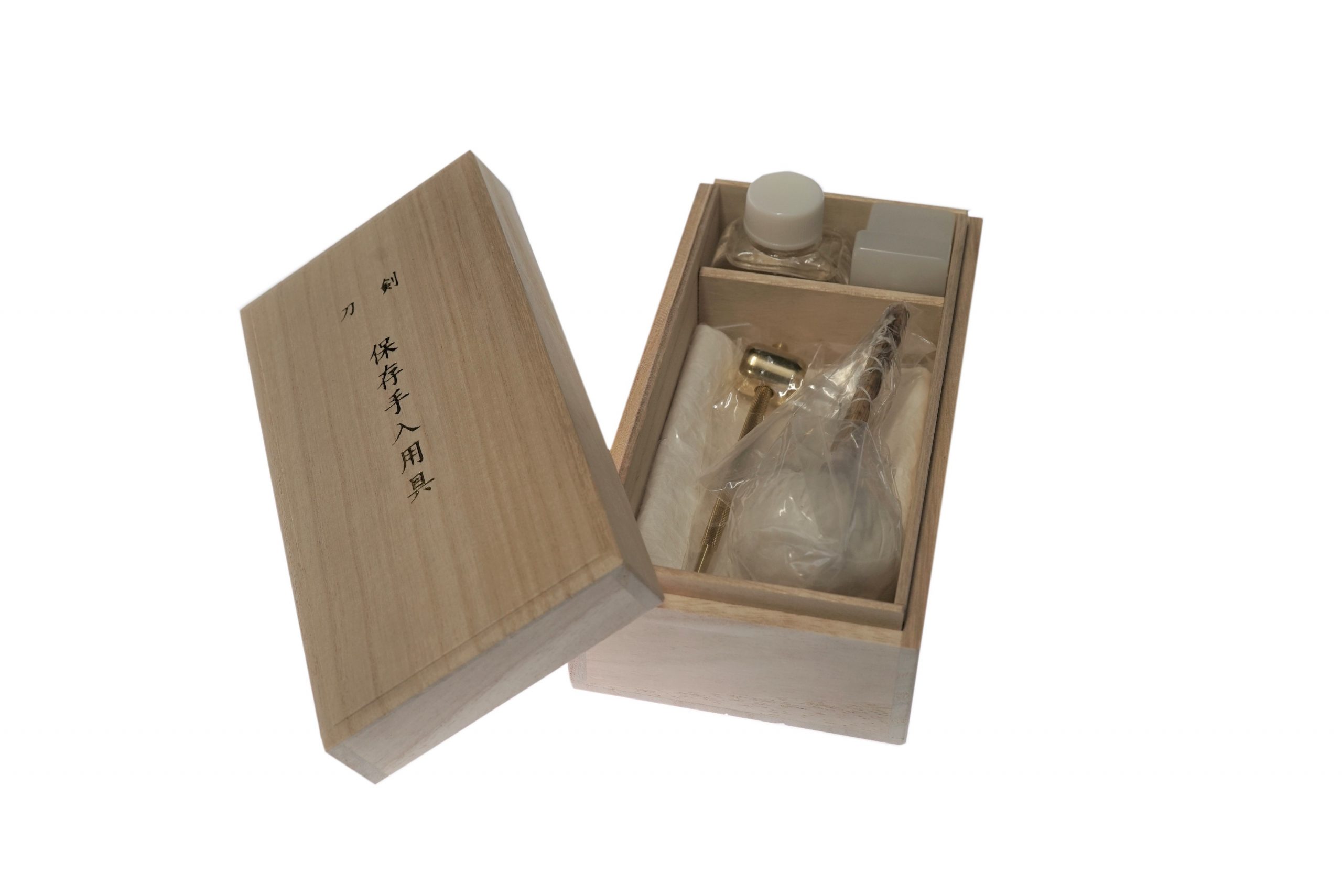
MORE ANTIQUE JAPANESE SWORD FOR SALE
SWORDS WITHOUT CERTIFICATES FOR SALE
LEARN JAPANESE SWORD TERMINOLOGY
Thank you for reading all the information on the page. If you have any difficulty choosing the right Japanese sword for you, we will be more than happy to help you find the one that speaks to you the most. Please feel free to contact us.

